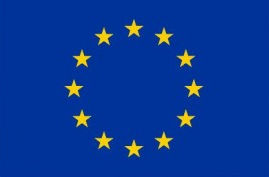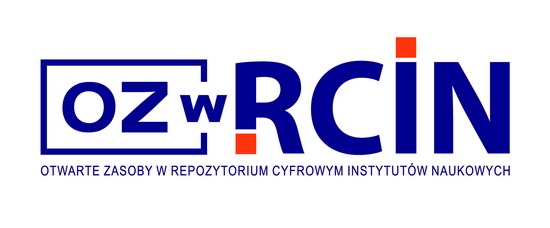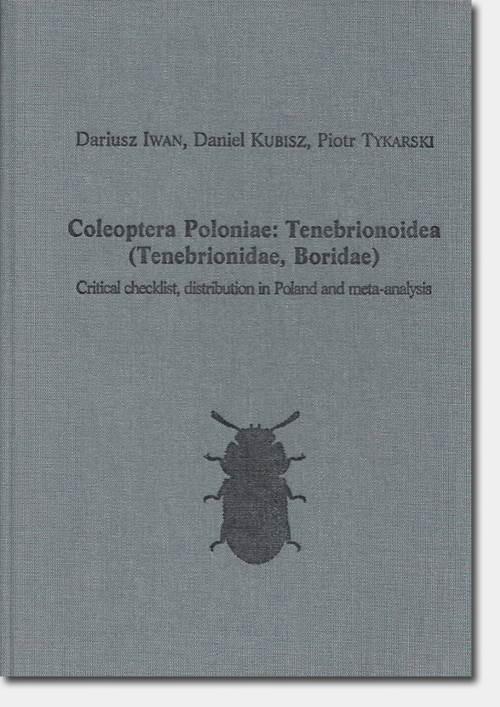Coleoptera Poloniae: Tenebrionoidea (Tenebrionidae, Boridae)
|
|
Critical checklist, distribution in Poland and meta-analysis Iwan D., Kubisz D., Tykarski P. 2012. Coleoptera Poloniae: Tenebrionoidea (Tenebrionidae, Boridae). University of Warsaw – Faculty of Biology, Hardcover, 176 x 250 mm, 480 pages, 200 figures, maps ISBN 978-83-935107-1-9 Cena: 75 euro + 5% VAT + postage orders: Please contact This email address is being protected from spambots. You need JavaScript enabled to view it. |
Please contact our orders department This email address is being protected from spambots. You need JavaScript enabled to view it., or use online form (secure HTTPS connection)
Special Offer (save up to 70%)
Abstract
The book provides a summary of data on occurrence of Tenebrionidae and Boridae in Poland.
The presence of 73 species of Tenebrionidae and 1 Boridae species is confirmed, while 28
tenebrionid taxa are considered doubtful or needing confirmation, although reported in the past.
Data on distribution of the confirmed taxa cover localities, UTM 10x10 km grid coordinates,
dates, collections that hold specimen, and source references, accompanied by distribution maps
generalized to the UTM grid. A separate chapter gives an overview of Palaearctic distribution of all
the discussed taxa, including subspecies when applicable. Detailed taxonomic checklist of the group
including synonymy is also provided separately. The distribution catalogue part is followed by the
meta-analysis built upon a database covering all the presented information. A number of analytical
and generalization techniques was used, giving synthetic views on research intensity and number of
species known in different parts of the country, commonness-abundance relationship and relative
species richness fives a new quality to traditional faunistics, being paired with the database that will
be available online through the Biodiversity Map and Coleoptera Poloniae websites, served by the
Polish Biodiversity Information Network (KSIB).
Key words
Coleoptera, Tenebrionoidea, Tenebrionidae, Boridae, biodiversity, faunistics, zoogeography,
distribution, meta-analysis, checklist, museum collections, Poland
Pracownia Badań Ornitologicznych
Główne projekty badawcze
- Zmienność wielkości gniazda u dziuplaków - efekt prezentacji jakości samicy, reakcji na jakość samca czy wymogów termoregulacyjnych
- Wpływ pasożytów krwi na dostosowanie ptaków z grupy dziuplaków
- Znaczenie zrębów dla kształtowania awifauny lasów gospodarczych
- Fragmentacja środowisk leśnych a funkcjonowanie populacji dziuplaków
- Monitoring ptaków, w tym monitoring obszarów specjalnej ochrony ptaków Natura 2000
Przykładowe publikacje
- Dubiec A., Góźdź I., Mazgajski T. D. 2013. Green plant material in avian nests. Avian Biology Research 6: 133–146.
- Kosicki J. Z., Chylarecki P. 2012. Effect of climate, topography and habitat on species-richness of breeding birds in Poland. Basic and Applied Ecology 13: 475-483.
- Żmihorski M. 2012. The effects of natural and anthropogenic disturbances on breeding birds in managed forests. Ornis Fennica 89: 63-73.
- Kanarek G. 2011. Population biology of Contracaecum rudolphii sensu lato (Nematoda) in the great cormorant (Phalacrocorax carbo) from northeastern Poland. Journal of Parasitology 97: 185–191.
- Zagalska-Neubauer M., Babik W., Stuglik M., Gustafsson L., Cichoń M., Radwan J. 2010. 454 sequencing reveals extreme complexity of the class II Major Histocompatibility Complex in the collared flycatcher. BMC Evolutionary Biology 10: 395.
- Zielińska M., Dubiec A., Zieliński P. 2010. Offspring sex ratio skew in the sexually monomorphic house martin. Journal of Avian Biology 41: 591-596.
- Żmihorski M. 2010. The effect of windthrow and its management on breeding bird communities in a managed forest. Biodiv. Conserv. 19:1871-1882.
- Neubauer G., Zagalska-Neubauer M. M., Pons J.-M., Crochet P.-A., Chylarecki P., Przystalski A., Gay L. 2009. Assortative mating without complete reproductive isolation in a zone of recent secondary contact between Herring Gulls (Larus argentatus) and Caspian Gulls (L. cachinnans). Auk 126: 409-419.
- Chylarecki P., Sikora A., Cenian Z. (red). 2009. Monitoring ptaków lęgowych. Poradnik metodyczny dotyczący gatunków chronionych Dyrektywą Ptasią. Główny Inspektorat Ochrony Środowiska, Warszawa
- Mazgajski T.D. 2007. Nest hole age decreases nest site attractiveness for the European Starling Sturnus vulgaris. Ornis Fennica 84: 32-38.
Wydajemy ACTA ORNITHOLOGICA (IF 2012 = 1.681, 5. pozycja w rankingu Journal Citation Reports dla 22 czasopism w kategorii Ornitologia)
Poszukujemy współpracowników do projektów badawczych:
- Oferujemy możliwość prowadzenia badań do pracy magisterskiej, licencjackiej i inżynierskiej w ramach projektów prowadzonych w Pracowni.
- Uczestnictwo w poszczególnych projektach badawczych, realizowanych w Pracowni możliwe jest również w ramach wolontariatu lub płatnego stażu absolwenckiego
- Umożliwiamy odbycie obowiązkowych praktyk studenckich
Osoby zainteresowane prosimy o kontakt z pracownikami
Identification of avian claws
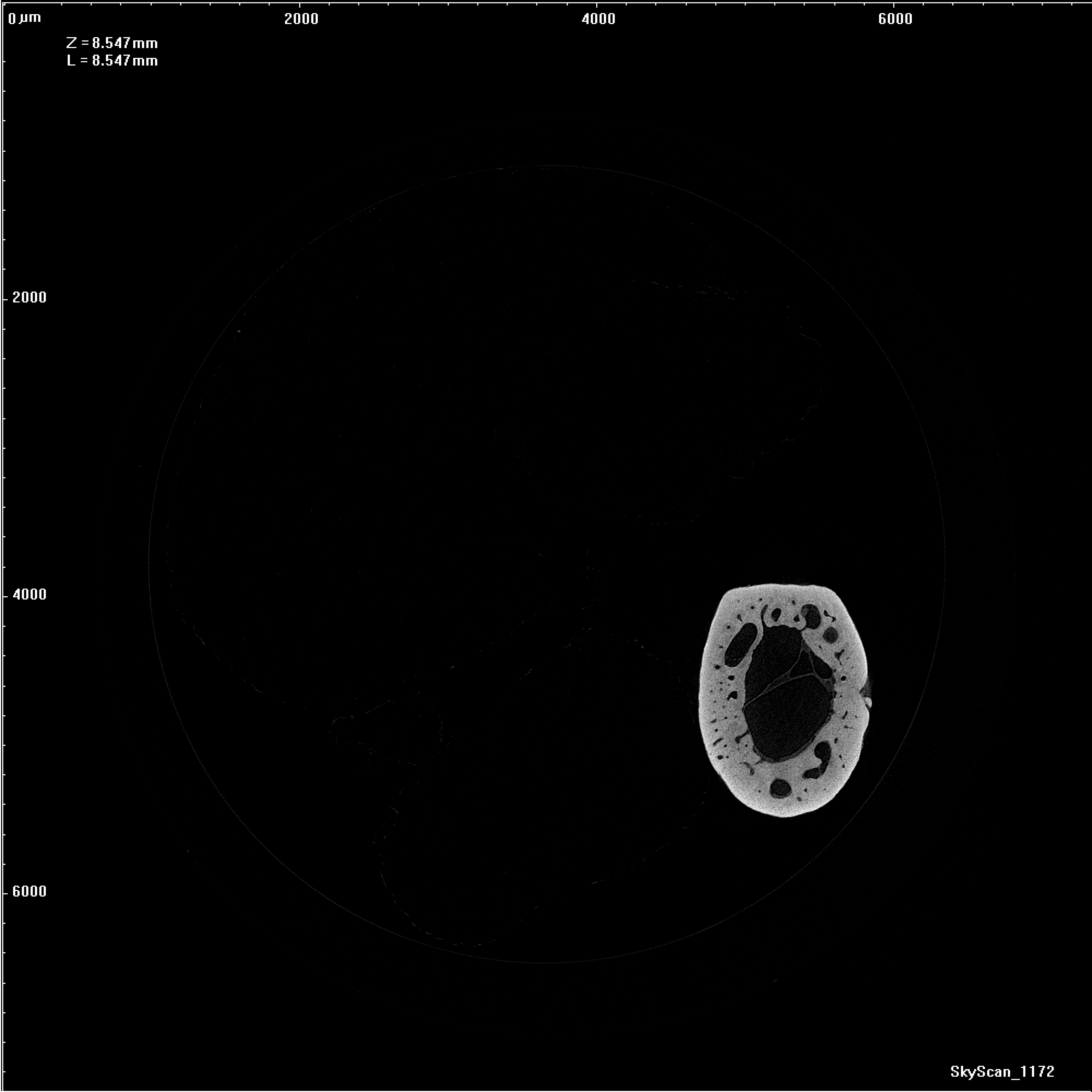
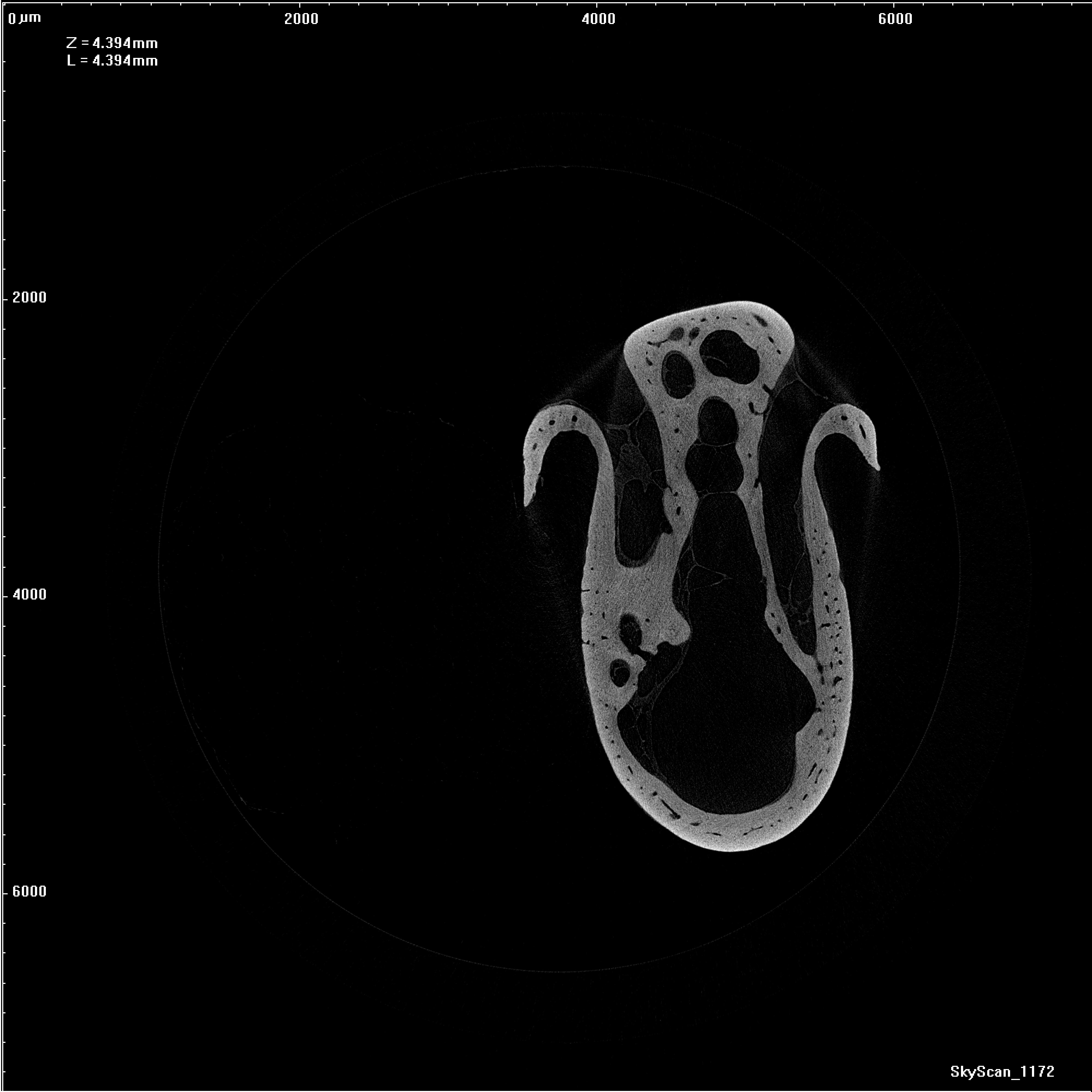
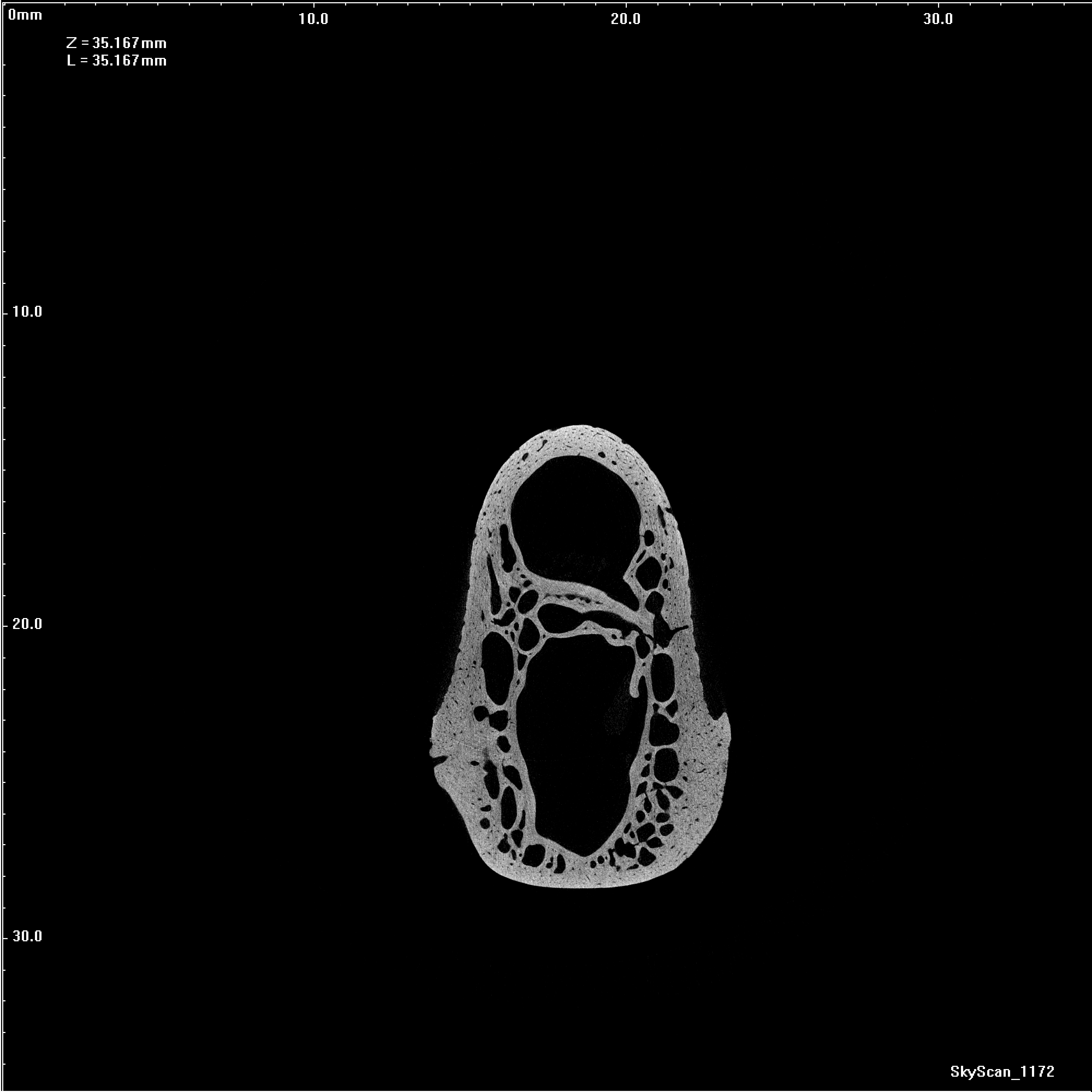
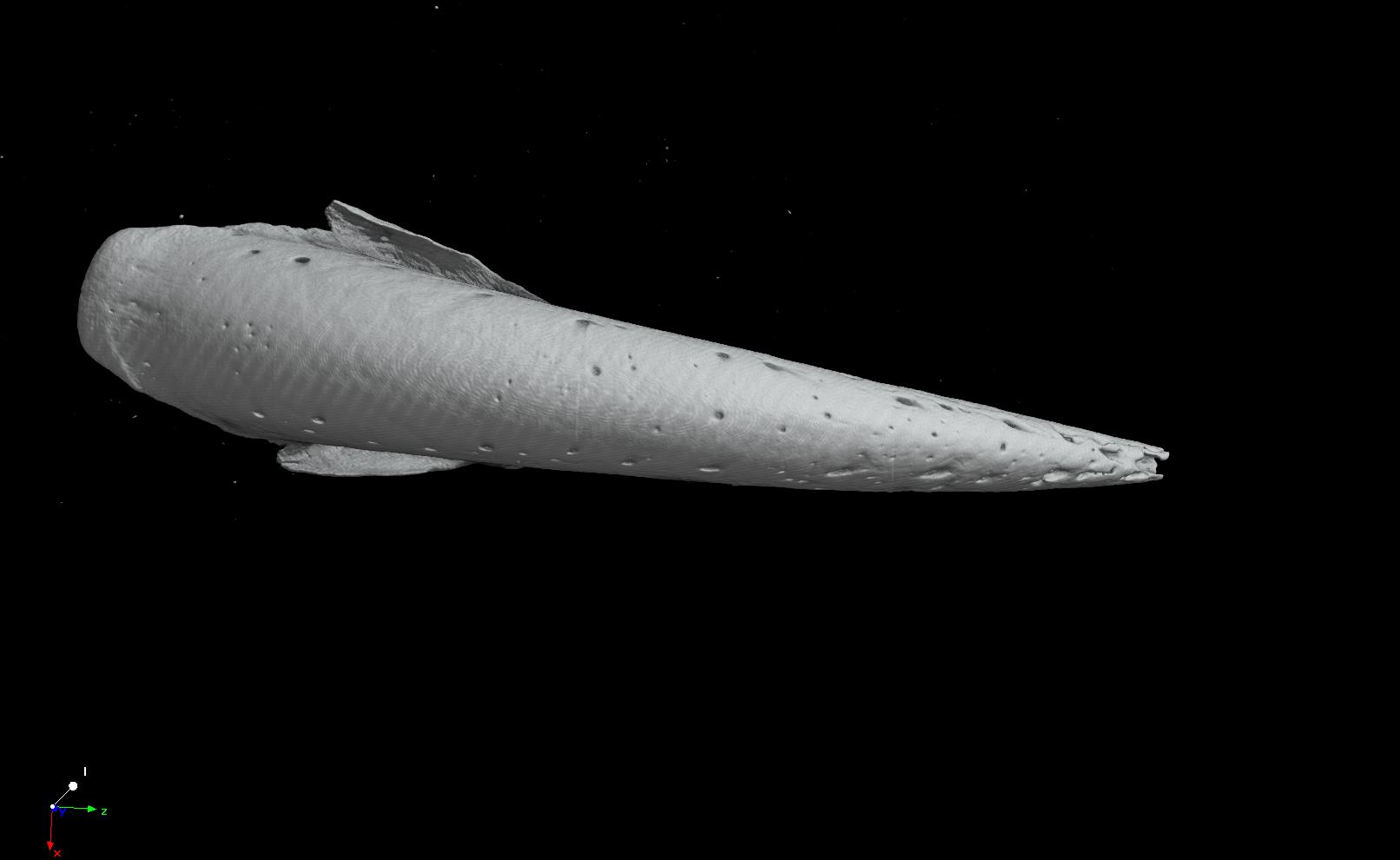
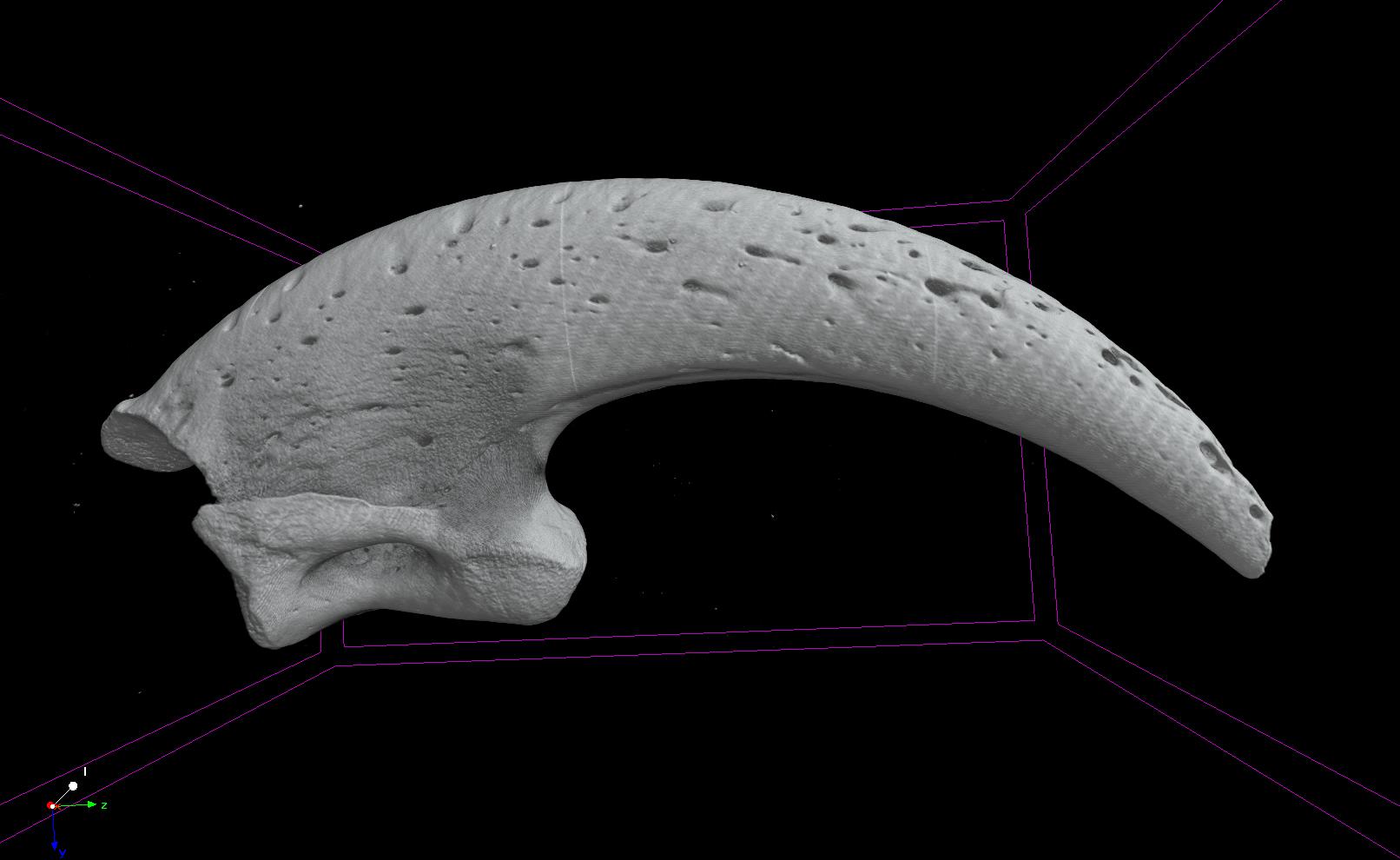
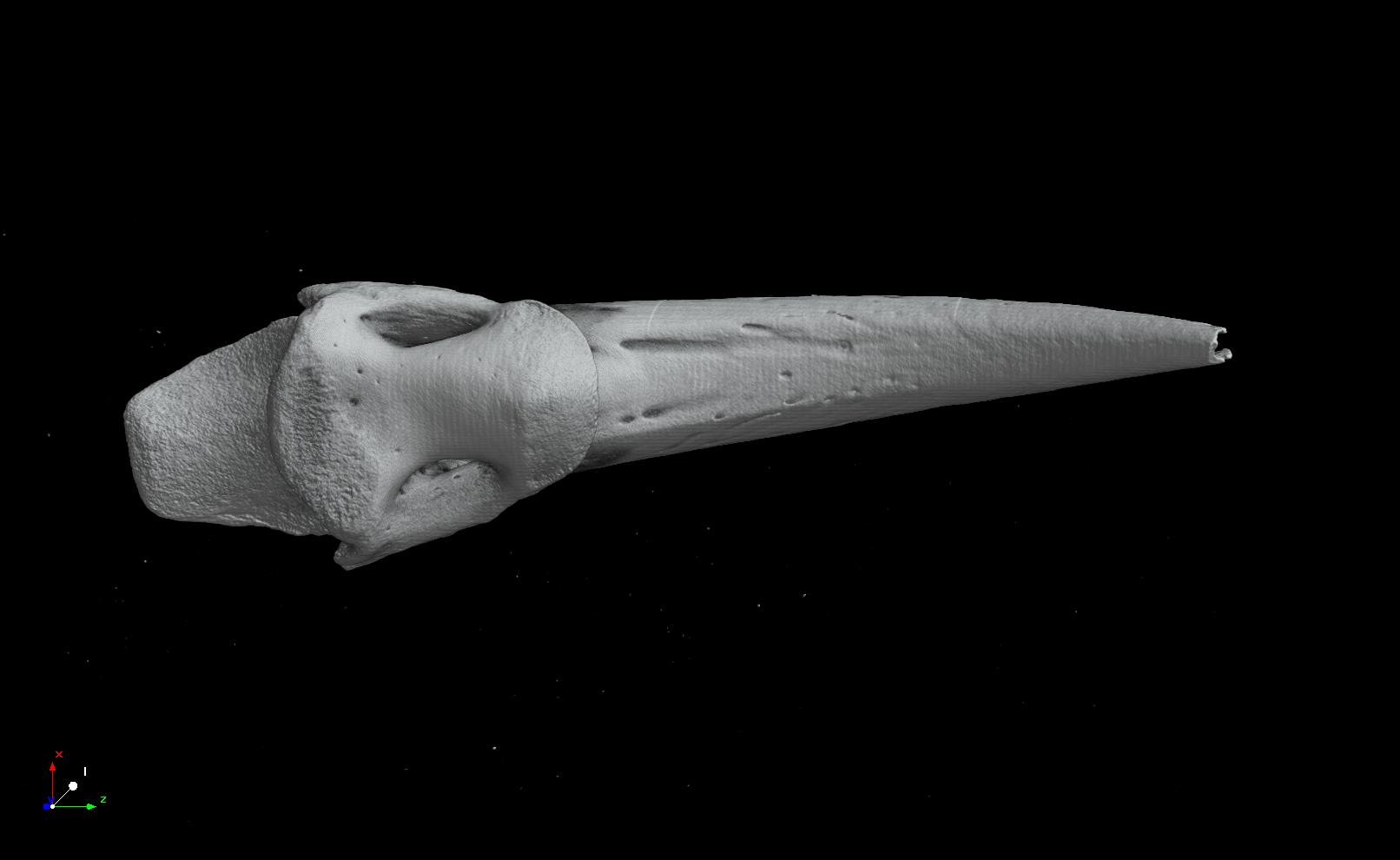
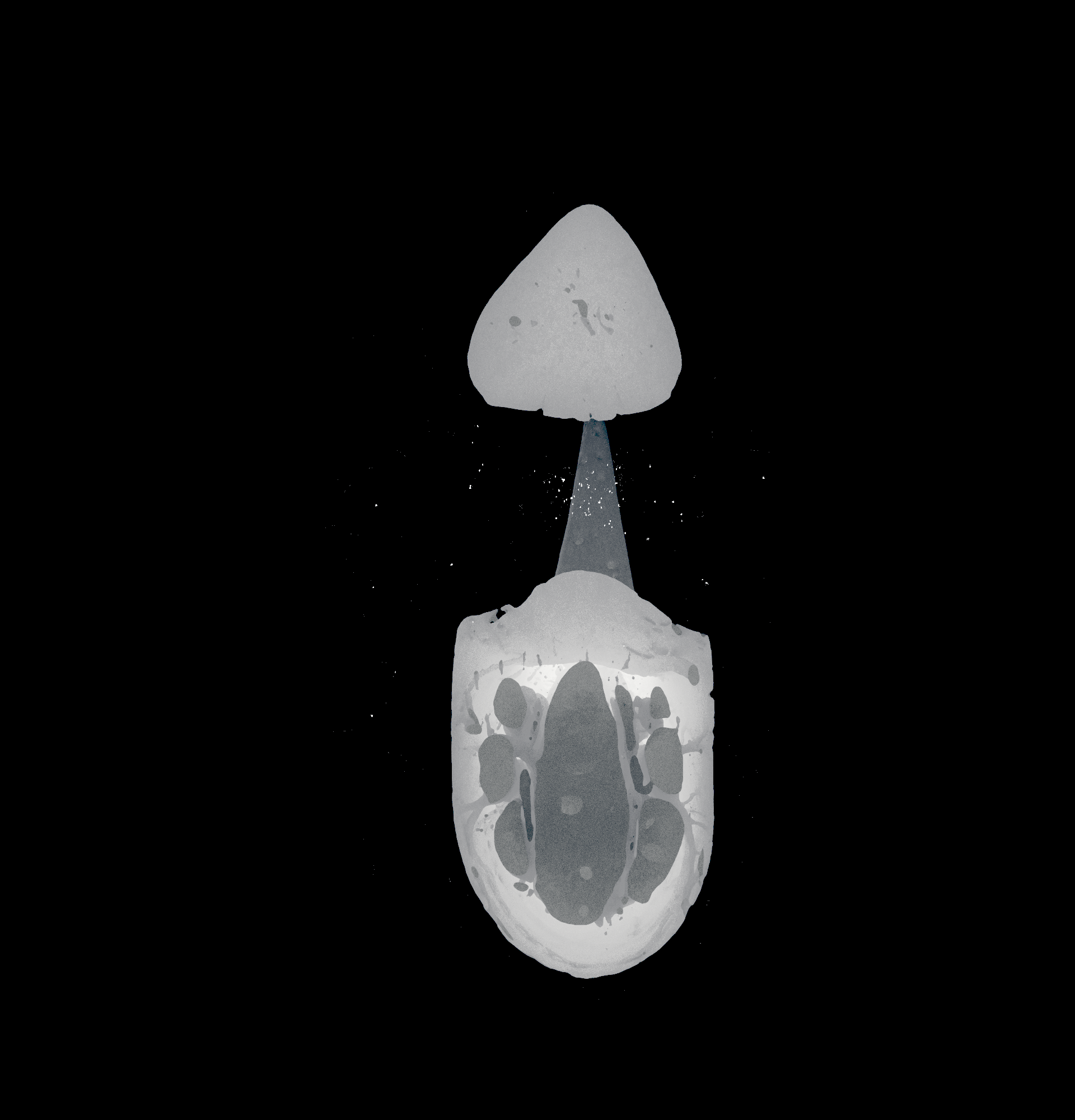
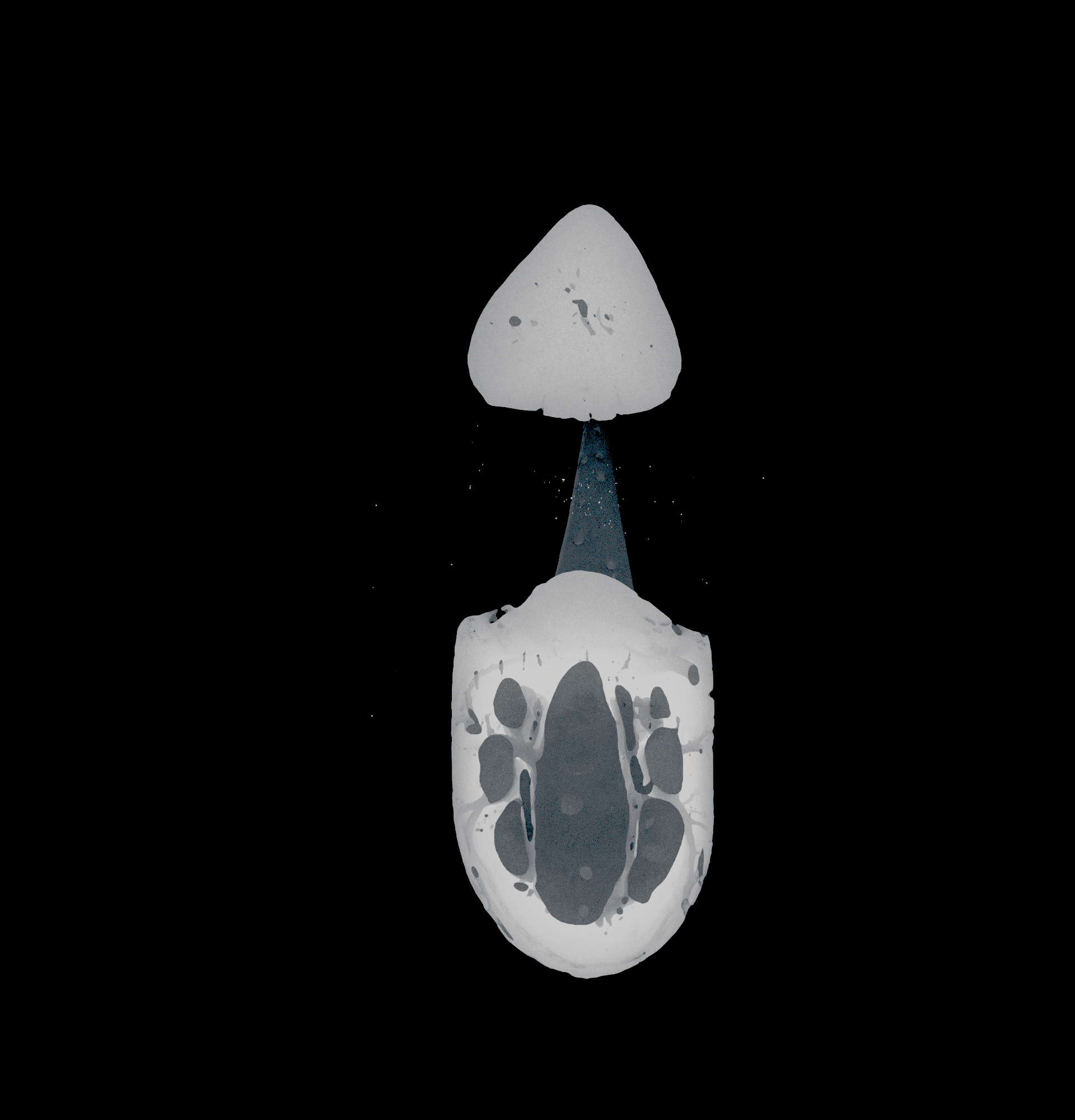
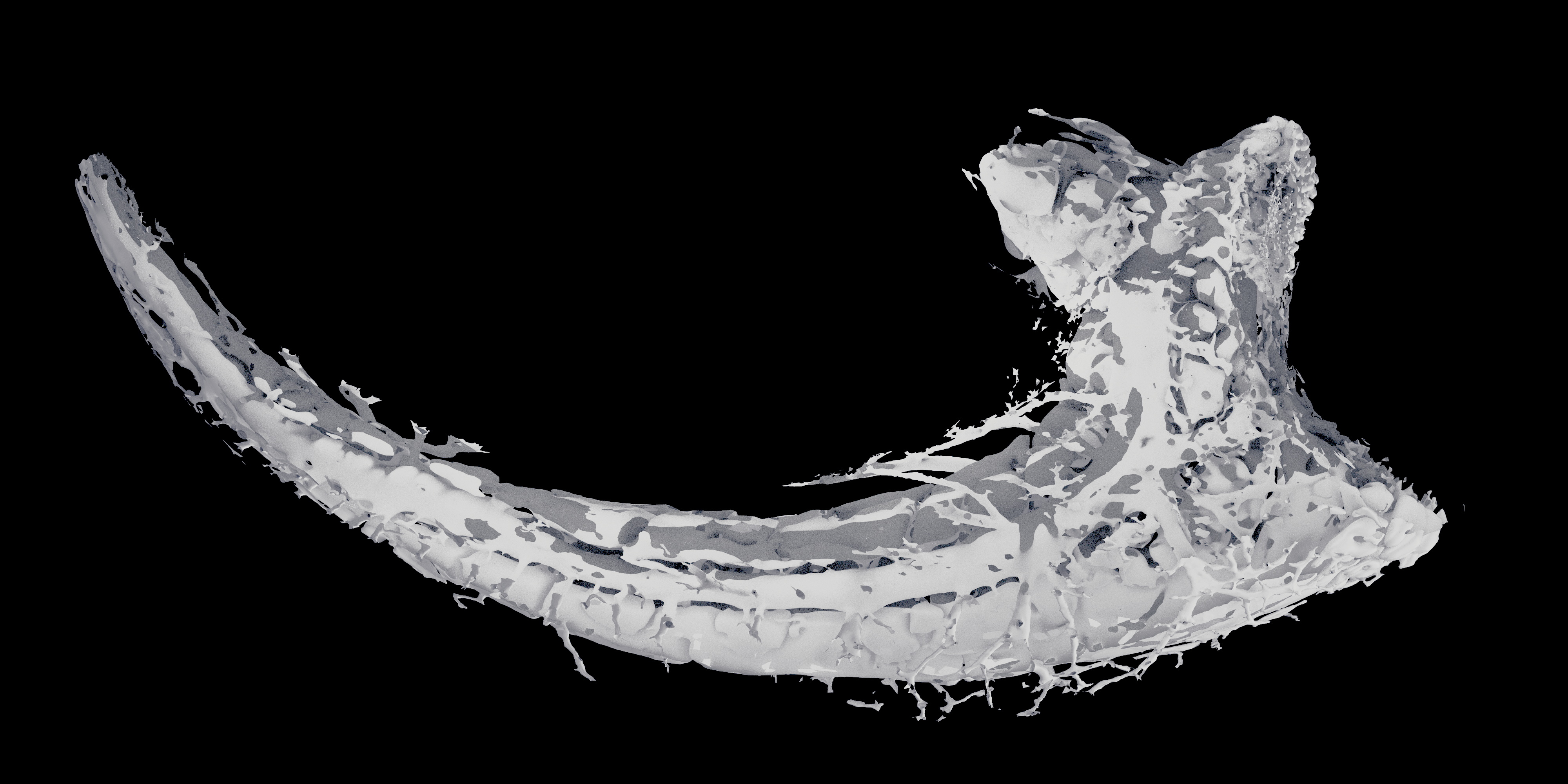
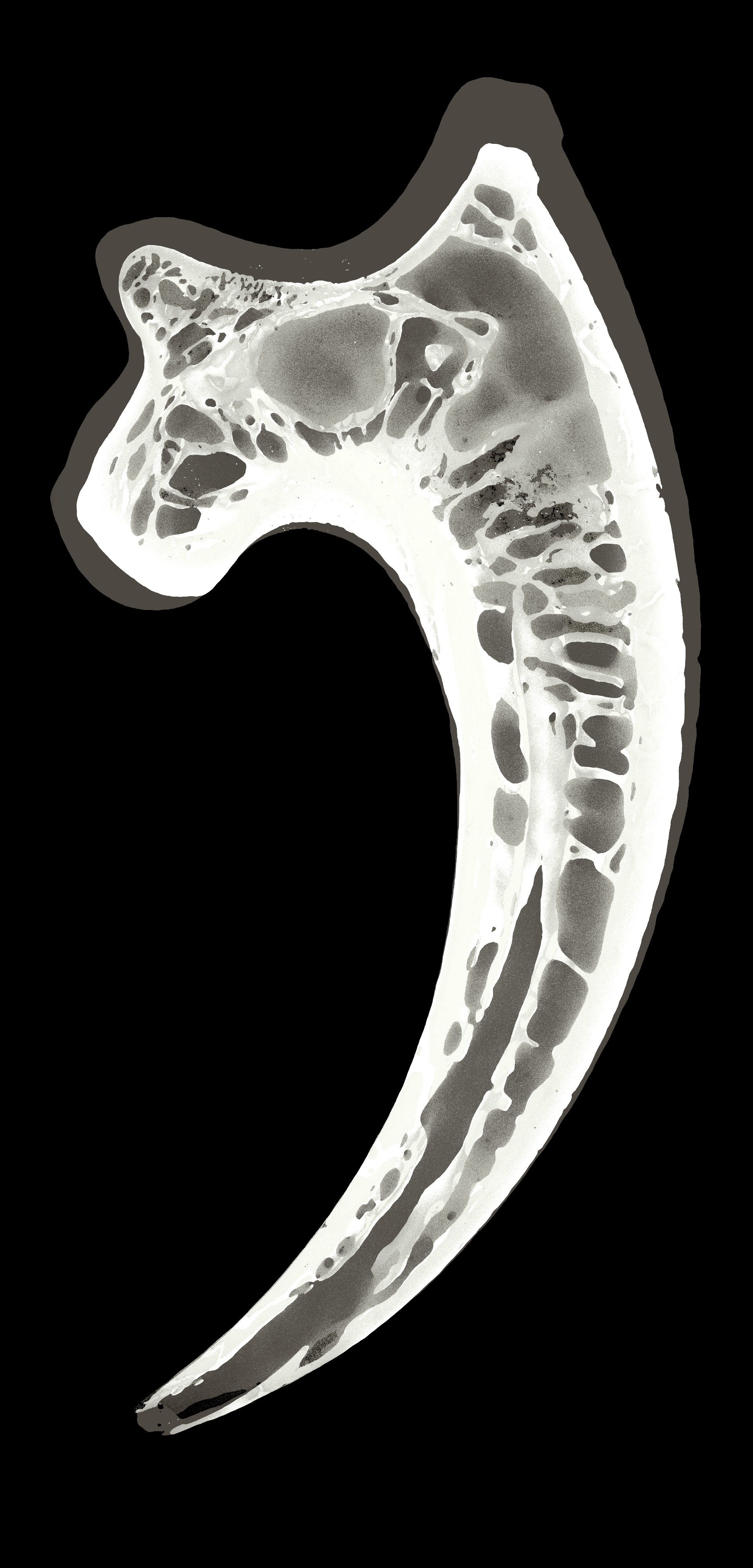
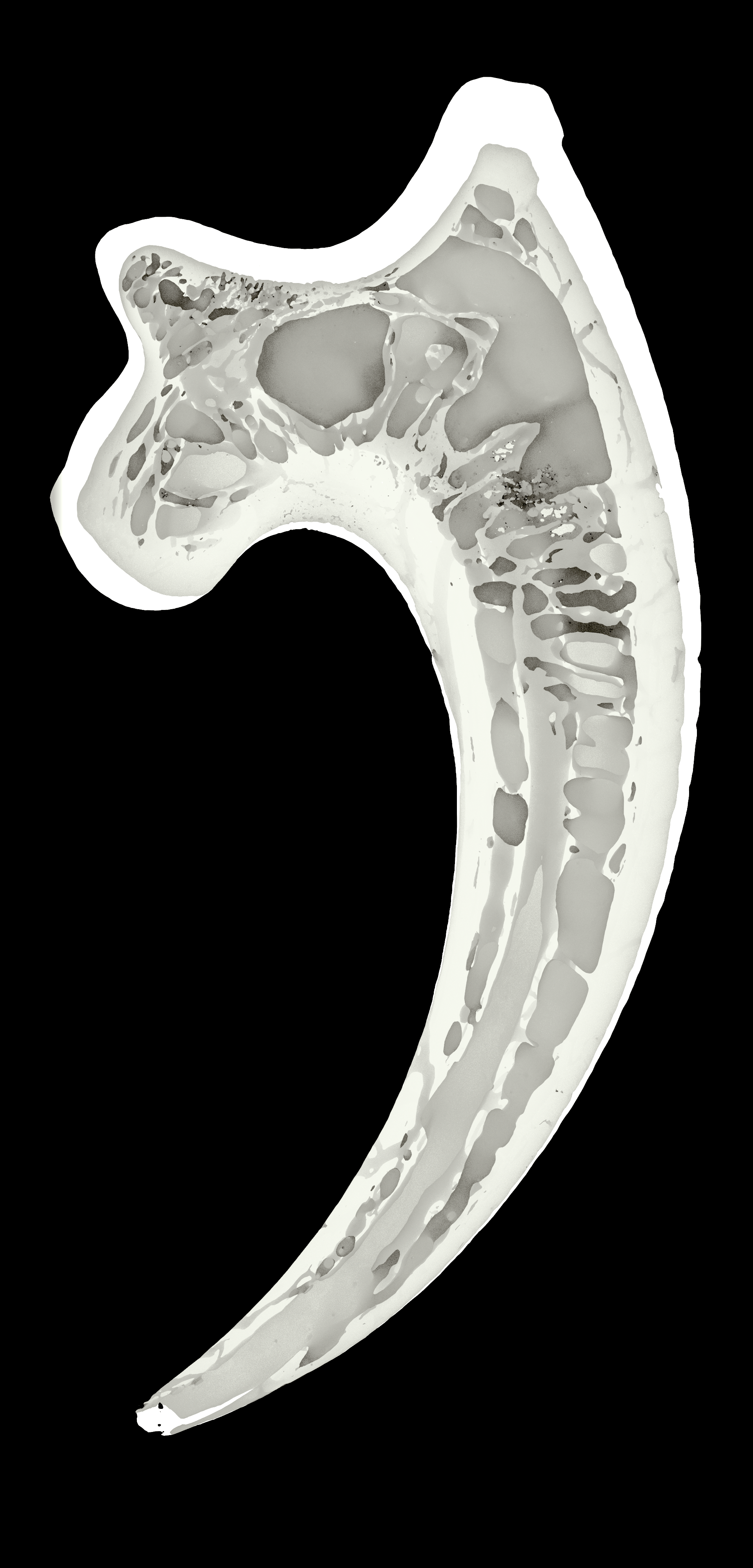
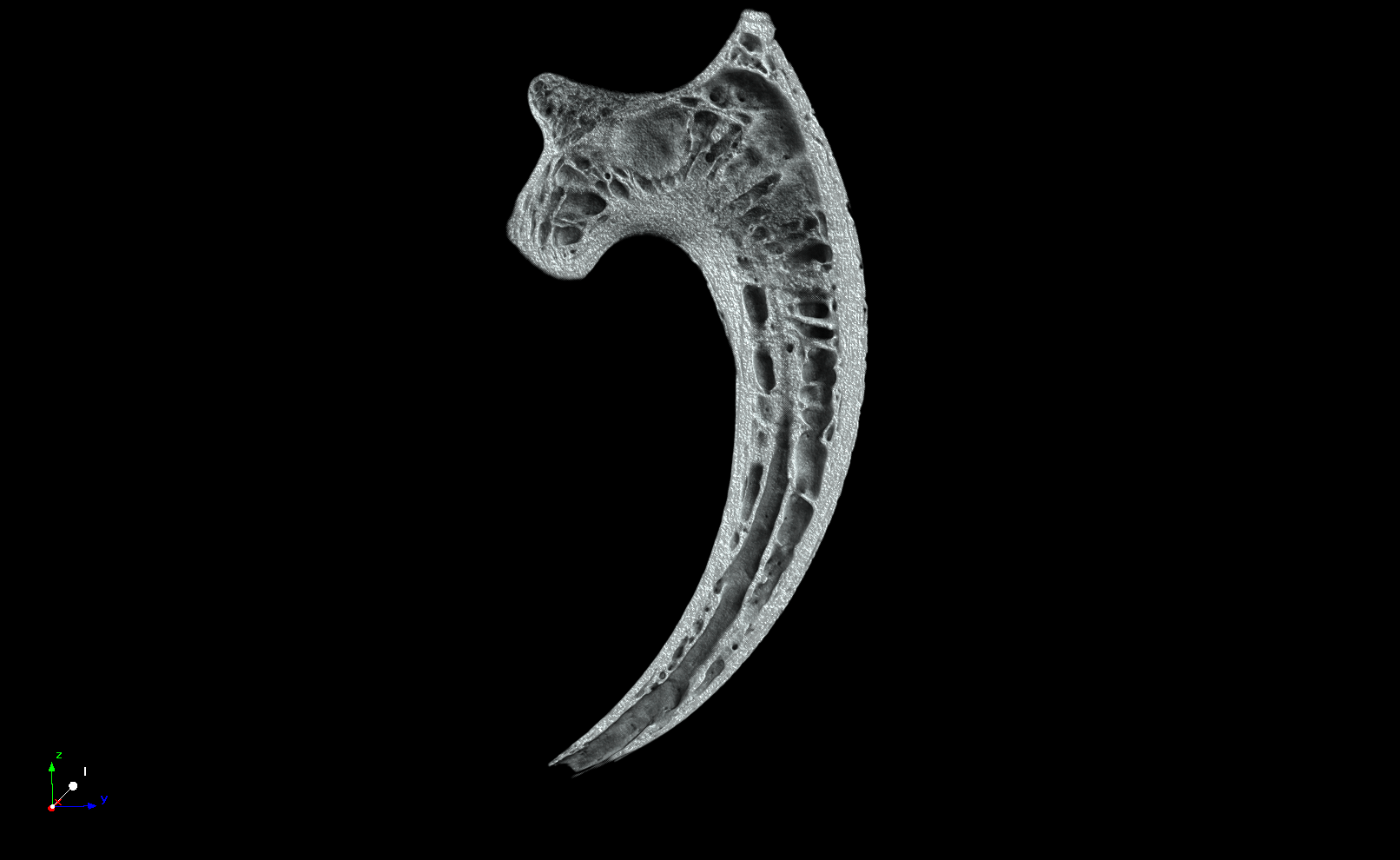
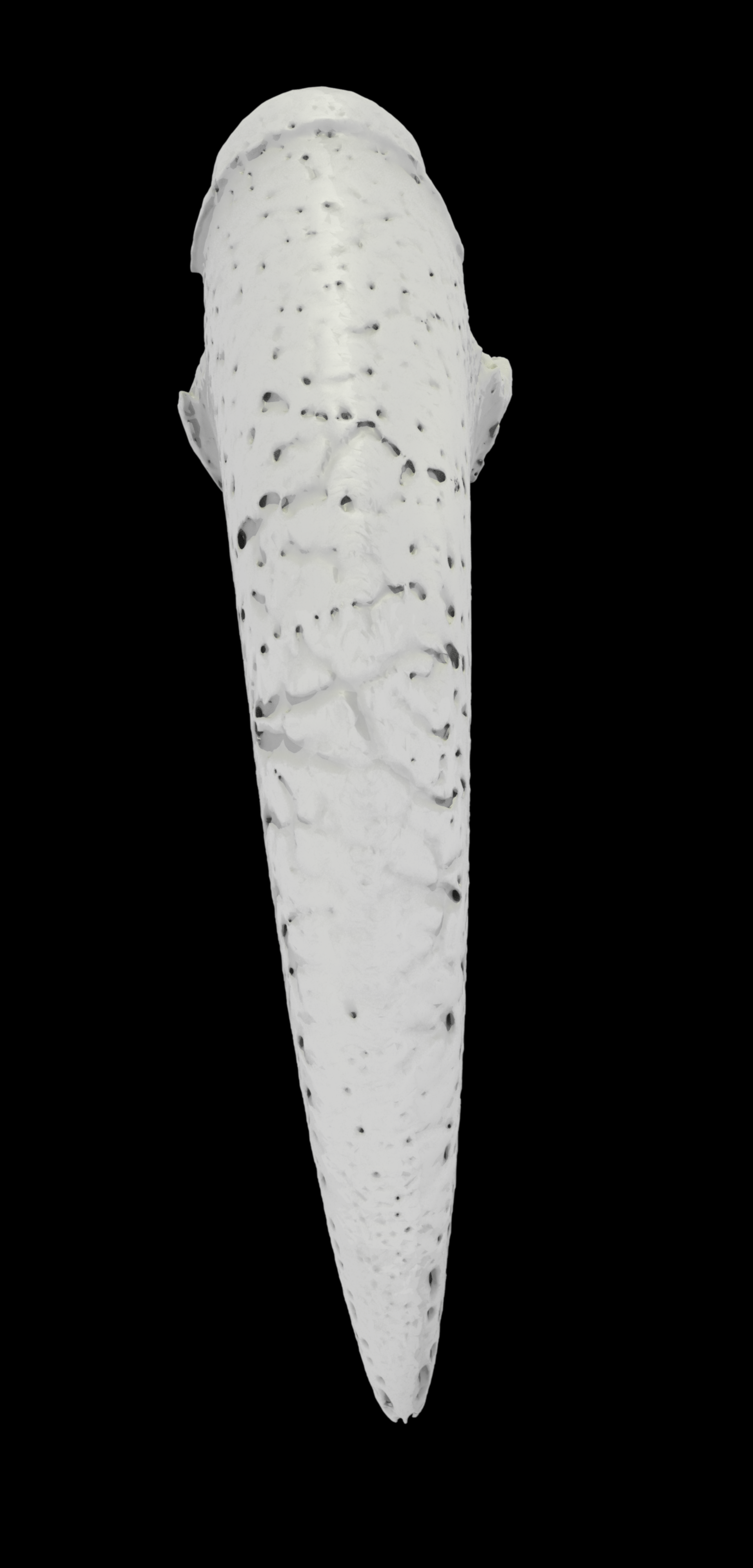 \
\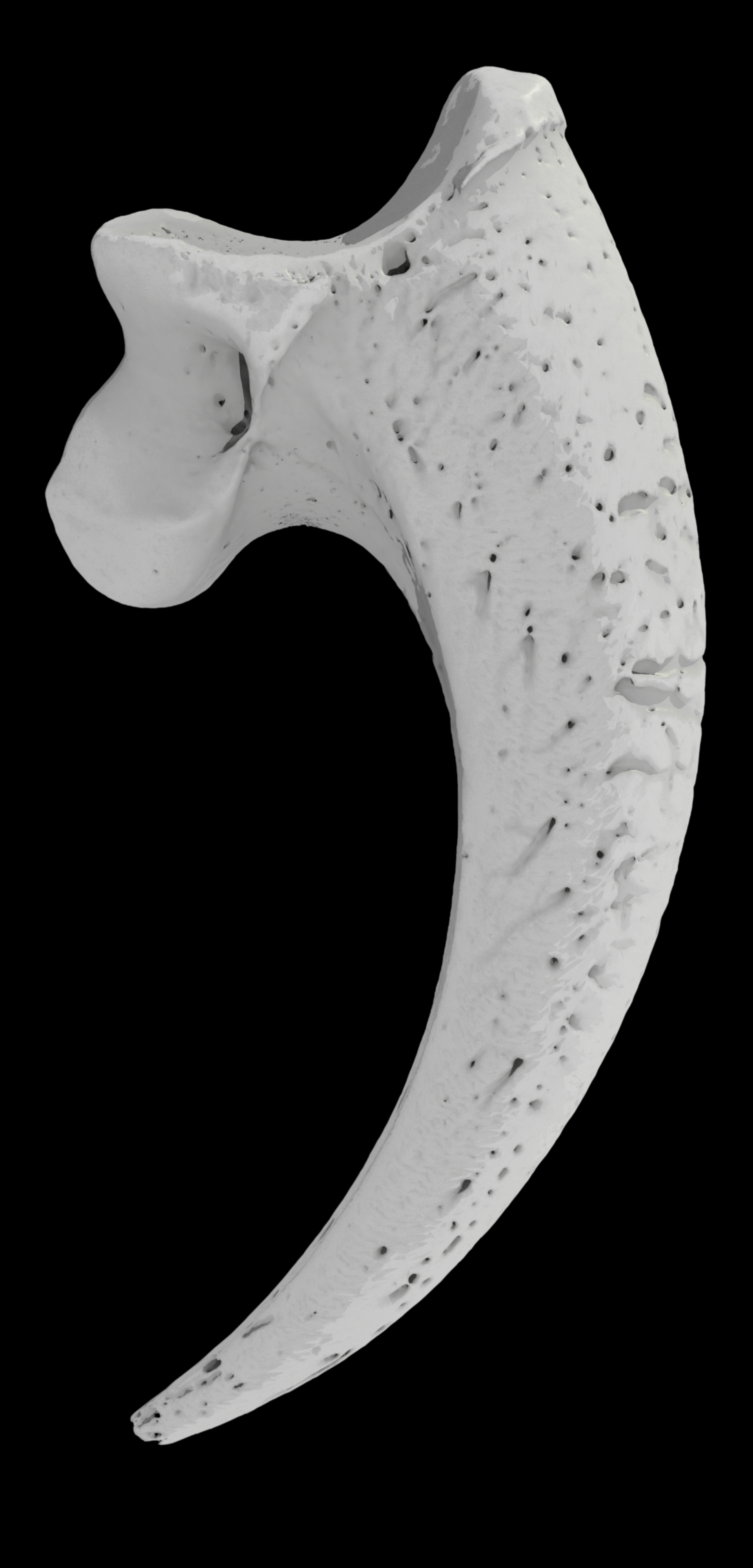
Mazgajski, Tomasz (dr hab.)
Główne zainteresowania naukowe:
• dziuplaki pierwotne i wtórne - dzięcioły, szpak, kowalik, sikory, muchołówka żałobna, kawka
• fragmentacja lasów
• wpływ ekto- i endopasożytów na ptaki
Bieżące projekty naukowe
• wpływ fragmentacji środowisk leśnych na ptaki
• wielkośc gniazda u dziuplaków
Wybrane publikacje:
|
• Rutkowski R., Jagołkowska P., Mazgajski T.D., Rejt Ł. 2008. Mitochondrial marker for studying European Picidae at various taxonomical levels. Annales zoologici 57: 907–913. 2007 • Mazgajski T.D. 2007. Nest hole age decreases nest site attractiveness for the European StarlingSturnus vulgaris. Ornis Fennica 84: 32-38.• Mazgajski T.D. 2007. Effect of old nest material on nest site selection and breeding parameters in secondary hole nesters - a review. Acta Ornithologica 42: 1–14. • Mazgajski T.D. 2007. Effect of old nest material in nestboxes on ectoparasite abundance and reproductive output in the European Starling Sturnus vulgaris. Polish Journal of Ecology 55: 377–385.
• Mazgajski T.D., Rejt Ł. 2006. The effect of forest patch size on the breeding biology of the great spotted woodpecker Dendrocopos major. Annales Zoologici Fennici 43: 211–220. • Rutkowski R., Mazgajski T.D., Rejt Ł. 2006. Cross-species amplification of microsatellite loci in European woodpeckers (Picidae). Annales zoologici 56: 819–826.
• Mazgajski T.D., Rejt Ł. 2005. Forest fragment size affects edge effect in nest predation. Polish Journal of Ecology 53: 233–242. • Mazgajski T.D., Woźniak A., Żmihorski M. 2005. Changes in the numbers of corvids wintering in Warsaw over years 1974–2004. In: Jerzak L., Kavanagh B.P., Tryjanowski P. (eds). Ptaki krukowate Polski (Corvids of Poland): 419-426. Bogucki Wydawnictwo Naukowe, Poznań.
• Mazgajski T.D., Kędra A.H., Beal K.G. 2004. The pattern of nest-site clearing by European Starling Sturnus vulgaris. Ibis 146: 175-177.
• Erritzoe J., Mazgajski T.D., Rejt Ł. 2003. Bird casualties on European roads – a review. Acta Ornithologica 38: 77-93. • Mazgajski T.D. 2003. Nest site choice in relation to the presence of old nests and cavity depth in the starling Sturnus vulgaris. Ethology, Ecology & Evolution 15: 273-281. • Mazgajski T.D. 2003. Nesting interaction between woodpeckers and starlings – delayed commensalism, competition for nest sites or cavity kleptoparasitism? Pages: 133-138. In: P. Pechacek & W. D’Oleire-Oltmanns: International Woodpecker Symposium. Proceedings.Forschungsbericht 48, Nationalparkverwaltung Berchtesgaden. • Pawełczyk A., Gryczyńska A., Mazgajski T.D. 2003. Parasites of Chaffinch (Fringilla coelebs)population. Part II. Blood parasites. Wiadomości Parazytologiczne 49: 31–38.
• Mazgajski T.D. 2002. Does the Great Spotted Woodpecker Dendrocopos major select holes for roosting? Polish Journal of Ecology 50: 99–103. 2001 • Kędra A.H., Mazgajski T.D. 2001. Factors affecting anvils utilization by Great Spotted Woodpecker Dendrocopos major. Polish Journal of Ecology49: 79–86.
• Mazgajski T.D. 2000. Competition for nest sites between the Starling Sturnus vulgaris and other cavity nesters - study in forest park. Acta Ornithologica 35: 103–107. • Gryczyńska A., Dolnik O., Pawełczyk A., Mazgajski T.D., Siemiątkowski M. 2000. Parasites and pathogenes in population of Chaffinch Fringilla coelebs from Masurian Lakeland, NE Poland. Acta Ornithologica 35: 79–83.
• Gryczyńska A., Dolnik O., Mazgajski T.D. 1999. Parasites of Chaffinch (Fringilla coelebs)population. Part I. Coccidia (Protozoa, Apicomplexa). Wiadomości Parazytologiczne 45: 495–500. • Kędra A.H., Mazgajski T.D. Kowalczyk K. 1999. Influence of the nest-site size on nestlings' condition, the case of Starling Sturnus vulgaris. Acta Ornithologica 34: 205–208.
• Mazgajski T.D. 1998. Nest-site characteristic of Great Spotted Woodpecker Dendrocopos major in Central Poland. Pol. J. Ecol. 46: 33-41. • Mazgajski T.D., Kędra A.H. 1998. Endoparasite Isospora sp. (Coccidia, Eimeriidae) affects the growth of starling Sturnus vulgaris nestling. Acta Parasitologica 43: 214-216.
|
Sekcja Ornitologiczna PT Zool.
Seminaria odbywają się w każdą drugą środę miesiąca o godz. 17.30 w Sali Konferencyjnej.
Najbliższe seminaria:
9.11.2016
Pan WITOLD MUCHOWSKI "Wielkie moce małej sowy"
14.12.2016
Pan Dr MATEUSZ LEDWOŃ (Instytut Systematyki i Ewolucji Zwierząt, Kraków) „Perypetie małżeńskie rybitw białowąsych - zdrady i rozwody”
11.01.2017
Pan Dr TOMASZ WILK (Ogólnopolskie Towarzystwo Ochrony Ptaków) „Ptaki polskich Karpat - czy wiemy już wszystko?”
Magdalena, Witek (dr)
Contact:
dr hab. Magdalena Witek
Head of the Group of Social and Myrmecophlious Insects
Contact:
This email address is being protected from spambots. You need JavaScript enabled to view it.
This email address is being protected from spambots. You need JavaScript enabled to view it.

Main Research Interest
- social parasitism in ants
- myrmecophily
- interactions between ants and fungi
- ant biodiversity
- division of labour in social insects
- development of personality in ants
Projects
Susceptibility of ant colonies for social parasitism and the impact of social parasites on host colony fitness. Fuga, Polish National Science Centre, 2012-2015, Principal Investigator
Personality in ants and factors influencing its development. Opus, Polish National Science Centre, 2016-2019, Principal Investigator
Adaptations and ongoing co-evolution: the case of source and reintroduced populations of obligatory myrmecophilous butterfly Maculinea teleius. Opus, Polish National Science Centre, 2019-2024, Principal Investigator
Bacteria – ant – plant interaction: the effect of ants as bacteria dispersal vectors and indirect drivers of plant health, Preldium, Polish National Science Centre, 2021-2024, (Daniel Sanchez Garcia – PI), Supervisor
Alien rule: Unveiling the mechanisms used by invasive ants to adapt to current and future environmental conditions, Polonez Bis 1, Polish National Science Centre , 2022-2024, (Iago Sanmatrin Villar – PI), Mentor
Who is pulling the strings? The importance of nutrition in a host-parasite system, Polonez Bis 2, Polish National Science Centre , 2023-2025, (Eniko Csata – PI), Mentor
Mobility
- Italy, University of Turin, Department of Human and Animal Biology, post-doc position, 02.2008-09.2012
- Romania, Hungarian Department of Biology and Ecology, Cluj-Napoca; Babeq-Bolyai University, International project in the framework of cooperation between Polish and Romanian Academies of Sciences, (2 weeks in 2013 and 2 weeks in 2014, 2 weeks in 2015, one week in 2019)
- Bulgaria, Institute of Biodiversity and Ecosystem Research, BAS, Sofia, Bulgaria (1 week in 2014), Sofia University (1 week in 2023)
- Germany, Department of Zoology and Evolutionary Biology, Regensburg University (3 weeks in 2016 and 1 week in 2022).
- Netherlands, Dutch Butterfly Conservation, Wageningen, (1 week in 2018, 1 week in 2019, 1 week in 2020).
Publications
1.Orbán-Bakk K., Witek M., Dubiec A., Heinze J., Markó B., Csata E. 2024. Infection with a non-lethal fungal parasite is associated with increased immune investment in the ant Myrmica scabrinodis. Journal of Invertebrate Pathology, 202: 108027
- Trigos Peral G., Maak I., Schmid S., Chodzik P., Czaczkes TJ., Witek M., Casacci LP., Sanchez Garcia D., Lorincz A., Kochanowski M., Heinze J. 2024.Urban abiotic stressors drive changes in the foraging activity and colony growth of the black garden ant Lasius niger. 2024. Science of The Total Environment, 915: 170157.
- Witek M., La Morgia V., Casacci L. P., Barbero F. 2023. The Pattern of Social Parasitism in Maculinea teleius Butterfly Is Driven by the Size and Spatial Distribution of the Host Ant Nests. Insects 14: 180
- Trigos-Peral G., Maák I.E., Ślipiński P., Witek M. 2023. Behavioral and morphological traits influencing variation in task performance of Camponotus vagus ants. Insectes Sociaux 70: 451–461.
- Śliwińska E.B., Martyka R., Woyciechowski M., Blinov A., Nowicki P., Stettmer C., Kajzer-Bonk J., Witek M., Brau M., Gros P., Mühlenberg M., Slowik J., Tyryanowski P., Settele J.. 2021. Comparison of genetic patterns between European and Asian populations of an endangered butterfly species. Insect Conservation and Diversity 14: 67-80.
- Casacci LP., Barbero F., Ślipiński P., Witek M. 2021. The Inquiline Ant Myrmica karavajevi Uses Both Chemical and Vibroacoustic Deception Mechanisms to Integrate into Its Host Colonies. Biology 10: 654.
- Ślipiński P., Trigos-Peral G., Maák I., Wojciechowska I., Witek M. 2021. The influence of age and development temperature on the temperature-related foraging risk of Formica cinerea ants. Behavioral Ecology and Sociobiology 75: 107.
- Maziarz M., Broughton R.K., Casacci L.P., Hebda G., Maák I., Trigos-Peral G., Witek M. 2021. Interspecific attraction between ground-nesting songbirds and ants: the role of nest-site selection. Frontiers in Zoology 18: 43.
- Maák I., Trigos-Peral G., Ślipiński P., Grześ I.M., Horváth G., Witek M. 2021. Habitat features and colony characteristics influencing ant personality and its fitness consequences. Behavioral Ecology 32 (1): 124–137.
- Trigos-Peral G., Rutkowski T., Witek M., Ślipiński P., Babik H., Czechowski W. 2020. Three categories of urban green areas and the effect of their different management on the communities of ants, spiders and harvestmen. Urban ecosystems 23: 803 – 818
- Maziarz M., Broughton R. K., Casacci L. P., Dubiec A., Maák I., Witek M. 2020. Thermal ecosystem engineering by songbirds promotes a symbiotic relationship with ants. Scientific Reports 10: 20330.
- Tartally A., Thomas J., Anton C., Balletto E., Barbero F., Bonelli S., Bräu M., Casacci L. P., Csősz S., Czekes Z., Dolek M., Dziekańska I., Elmes G., Fürst M. A., Glinka U., Hochberg M., Höttinger H., Hula V., Maes D., Munguira M. L., Musche M., Nielsen P. S., Nowicki P., Oliveira P. S., Peregovits L., Ritter S., Schlick-Steiner B. C., Settele J., Sielezniew M., Simcox D.J., Stankiewicz-Fiedurek A. M., Steiner F. M., Švitra G., Ugelvig L.V., Van Dyck H., Varga Z., Witek M., Woyciechowski M., Wynhoff I., Nash D. R. 2019. Patterns of host use by brood-parasitic Maculinea butterflies across Europe. Philosophical Transactions of the Royal Society B: 20180202.
- Maák I., Camera J., Casacci L. P., Barbero F., Trigos Peral G., Ślipiński P., Bonelli S., Zaccagno M., Witek M. 2019)\. The influence of colony traits on the collective behaviour of Myrmica scabrinodis ants. Insect Conservation and Diversity 12: 481–491.
- Grześ IM., Ślipiński P., Babik H., Moroń D., Walter B., Trigos Peral G., Maak I., Witek M. 2018. Colony size and brood investment of Myrmica rubra ant colonies in habitat invaded by goldenrods. Insectes Sociaux, doi: 10.1007/s00040-018-0612-0.
- Trigos Peral G., Casacci LP., Ślipiński P., Grześ IM., Moroń D., Babik H., Witek M. 2018. Ant communities and Solidago plant invasion: Environmental properties and food sources. Entomological Science, doi: 10.1111/ens.12304.
- Csata E., Timus N., Witek M., Casacci LP., Lucas C., Bagneres AG., Sztencel-Jablonka A., Barbero F., Bonelli S., Rakosy L., Marko B. (2017) Lock-picks: fungal infection facilitates the intrusion of strangers into ant colonies. Scientific Reports, 7, article nb. 46323.
- Witek M., Ślipiński P., Trigos Peral G., Csata E. 2016. Consequences of the arms race between Maculinea teleius social parasite and Myrmica host ants for myrmecophilous butterfly conservation. Journal of Insect Conservation, 20: 887–893.
- Witek M., Ślipiński P., Naumiec K., Krupski A., Babik H., Walter B., Symonowicz B., Dubiec A. 2016. Performance of Myrmica ant colonies is correlated with presence of social parasites. Ecological Entomology, 41: 284–291.
- Sielezniew M., Patricelli D., Rutkowski R., Witek M., Bonelli S., Buś M.M. 2015 Population genetics of the endangered obligatorily myrmecophilous butterfly Phengaris (= Maculinea) arion in two areas of its European range. Insect Conservation and Diversity, 8: 505-516.
- Witek M., Barbero F., Markó B. 2014. Myrmica ants host highly diverse parasitic communities: from social parasites to microbes. Insectes Sociaux, 61: 307–323.
- Witek M., Casacci L. P., Barbero F., Patricelli D., Sala M., Bossi S., Maffei M., Woyciechowski M., Baletto E., Bonelli S. 2013. Interspecific relationships in co-occurring populations of social parasites and their host ants. Biological Journal of Linnean Society, 109: 699–709.
- Lenda M., Witek M., Skórka P., Moroń D., Woyciechowski M. 2013. Invasive alien plants affect grassland ant communities, colony size and foraging behavior. Biological Invasions, 15: 2403-2414.
- Kajzer-Bonk J., Nowicki P., Bonk M., Skórka P., Witek M., Woyciechowski M. 2013. Local populations of endangered Maculinea (Phengaris) butterflies are flood resistant. Journal of Insect Conservation, 17: 1105-1112.
- Patricelli D., Sielezniew M., Ponikwicka-Tyszko D., Ratkiewicz M., Bonelli S., Barbero F., Witek M., Bus M., Rutkowski R., Balletto E. (2013) Contrasting genetic structure of rear edge and continuous range populations of a parasitic butterfly infected by Wolbachia. BMC Evolutionary Biology, 13, article number 14.
- Skórka P., Nowicki P., Kudłek J., Pępkowska A., Śliwińska E.B., Witek M., Settele J., Woyciechowski M. 2013. Movements and flight morphology in the endangered Large Blue butterflies. Central European Journal of Biology, 8: 662-669.
- Skórka P., Nowicki P., Lenda M., Witek M., Śliwińska E.B., Settele J., Woyciechowski M. 2013. Different flight behaviour of the endangered scarce large blue butterfly Phengaris teleius (Lepidoptera: Lycaenidae) within and outside its habitat patches. Landscape Ecology, 28: 533-546.
- Bonelli S., Vrabec V., Witek M., Barbero F., Patricelli D., Nowicki P. 2013. Selection on dispersal in isolated butterfly metapopulations. Population Ecology, 55: 469-478.
- Witek M., Canterino S., Balletto E., Bonelli S. 2012. Life cycle and growth pattern of the endangered myrmecophilous Microdon myrmicae (Diptera: Syrphidae). European Journal of Entomology, 109: 457–461.
- de Assis RA., Bonelli S., Witek M., Barbero F., Casacci LP., Balletto E., Venturino E., Ferreira WC. 2012. A model for the evolution of parasite-host interactions based on the Maculinea-Myrmica system: Numerical simulations and multiple host behavior. Nonlinear Analysis-Real World Applications, 13: 1507-1524.
- 30. Witek M., Particelli D., Casacci LP., Barbero F., Balletto E., Bonelli S. 2011. Notes on the biology and host ant specificity of the myrmecohhilous syrphis fly Microdon major (Diptera: Syrphidae), a social parasite of Formica ants (Hymenoptera: Formicidae). Sociobiology, 57: 261-269.
- Bonelli S., Witek M., Canterino S., Sielezniew M., Stankiewicz-Fiedurek A., Tartally A., Balletto E., Schӧnrogge K. 2011. Distribution, host specificity and the potential for cryptic speciation in hoverfly Microdon myrmicae (Diptera: Syrphidae), a social parasite of Myrmica ants. Ecological Entomology, 36: 135-143.
- Particelli D., Barbero F., La Morgia V., Casacci L.P., Witek M., Balletto E., Bonelli S. (2011) To lay or not to lay: oviposition of Maculinea arion in relation to Myrmica ant presence and host plant phenology. Animal Behaviour, 82: 791-799.
- Casacci LP., Witek M., Barbero , Patricelli D., Solazzo G., Balletto E., Bonelli S. (2011) Habitat preferences of Maculinea arion and its Myrmica host ants: implications for habitat management in Italian Alps. Journal of Insect Conservation, 15: 103-110.
- Witek M., Skórka P., Śliwinska BE., Nowicki P., Moroń D., Settele J., Woyciechowski M. (2011) Development of parasitc Maculinea teleius (Lepidoptera, Lycaenidae) in laboratory nests of four Myrmica ant host species. Insectes Sociaux, 58: 403-411.
- Patricelli D., Witek M., Barbero F., Casacci LP., Bonelli S., Balletto E. (2010) Evidence of high larval host ant specificity in the first post adoption phase for the myrmecophilous butterfly Phengaris (Maculinea) nausithous (Lepidoptera: Lycaenidae). Sociobiology, 55: 861-870.
- Sielezniew M., Patricelli D., Dziekańska I., Barbero F., Casacci L.P., Witek M., Balletto E., Bonelli S. (2010) The first record of M. lonae (Hymenoptera: Formicidae) as a host of socially parasitic Blue butterfly Phengaris (Maculinea) arion. Sociobiology, 56: 465-475.
- Witek M., Nowicki P., Śliwinska BE., Skórka P., Settele J., Schӧnrogge K., Woyciechowski M. (2010) Local host ant specificity of Phengaris (Maculinea) teleius butterfly, an obligatory social parasite of Myrmica ants. Ecological Entomology, 35: 557-564.
- Witek M., Śliwińska EB., Skórka P., Nowicki P., Wantuch M., Vrabec V., Settele J., Woyciechowski M. (2008) Host ant specificity of Large Blue butterflies Phengaris (Maculinea) (Lepidoptera: Lycaenidae) inhabiting humid grasslands of East-central Europe. European Journal of Entomology, 105: 871-877.
- Śliwińska EB., Witek M., Skórka P., Osikowski A., Woyciechowski M. (2008). The frequency of multiple paternity in Myrmica scabrinodis from southern Poland. Entomological Science, 11: 127-129.
- Moron D., Witek M., Woyciechowski M. (2008) Division of labour among workers with different life expectancy in ant Myrmica scabrinodis. Animal Behaviour, 75: 345-350.
- Nowicki P., Pępkowska A., Kudłek J., Skórka P., Witek M., Settele J., Woyciechowski M. (2007) From metapopulation theory to conservation recommendations: lessons from spatial occurrence and abundance patterns of Maculinea butterflies. Biological Conservation, 140: 119-129.
- Śliwinska EB., Nowicki P., Nash DR., Witek M., Settele J., Woyciechowski M. (2006) Morphology of caterpillars and pupae of European Maculinea species (Lepidoptera: Lycaenidae) with an identification table. Entomologica Fennica, 17: 351-358.
- Skórka P., Witek M., Woyciechowski M. (2006) A simple and nondestructive method for estimation of worker population size in Myrmica ant nests. Insectes Sociaux, 53: 97-100.
- Witek M., Śliwinska E., Skórka P., Nowicki P., Settele J., Woyciechowski M (2006) Polymorphic growth in larvae of Maculinea butterflies, as an example of biennialism in myrmecophilous insects. Oecologia, 148: 729-733.
- Nowicki P., Witek M., Skórka P., Woyciechowski M. (2005) Oviposition patterns in the myrmecophilous butterfly Maculinea alcon in relation to characteristic of foodplants and presence of ant hosts. Polish Journal of Ecology, 53: 409-417.
- Nowicki P., Witek M., Skórka P., Woyciechowski M., Settele J. (2005) Population ecology of endangered butterflies Maculinea teleius and M. nausithous, and its conservation implications. Population Ecology, 47: 193-202.
- Dubiec A., Witek M., Cichoń M. (2005) Seasonal decline in leukocyte concentration and reproductive output in female Great Tits. The Auk, 122: 829-834.
Pracownia Ekologii i Bioróżnorodności
|
||
Wytwer, Jolanta (dr)
Dr Jolanta Wytwer
Main interests
Chilopoda, Diplopoda (Myriapoda), taxonomy, faunistics and ecology, soil zoology, changes in fauna, biodiversity, methods of faunistic studies
|
|
 |
  |
Selected publications:
Wawer W., Wytwer J. 2020. Abundance changes in orb-weaver spider communities at the edge of the Argiope bruennichi expansion range. Zootaxa 4899 (1): 363−373.
Wytwer J.; Tajovsky K. 2019. The Siberian centipede species Lithobius proximus Sseliwanoff, 1878 (Chilopoda, Lithobiomorpha ): a new member of the Polish fauna. Zookeys 821: 1–10.
Ulrich W.; Hoste-Danyłow A.; Faleńczyk-Koziróg K.; Hajdamowicz I.; Ilieva-Makulec K.; Olejniczak I.; Stańska M.; Wytwer J. 2015. Temporal patterns of energy equivalence in temperate soil invertebrates. Oecologia 179 (1): 271-280.
Hoste-Danyłow A., Ilieva-Makulec K., Olejniczak I., Hajdamowicz I., Stańska M., Marczak D., Wytwer J., Faleńczyk-Koziróg, & Ulrich W. 2013. The shape of the intraspecific metabolic rate-body size affects interspecific biomas and abundance distribution s of soil animals within a forest ecosystem. Annales of Zoologici Fennici 50: 209–302.
Wytwer J. 2012. Wije (Myriapoda), pp. 7–52. In: Błaszak Cz. (ed.), Zoologia. Bezkręgowce. Tom II, cz.2.. Wydawnictwo Naukowe PWN, Warszawa.
Dányi L. & Wytwer J. 2012. The true identity of Schendyla furcidens Kaczmarek, 1962 (Chilopoda: Schendylidae). Annales Zoologici 62 (2): 309–316.
Tajovský K., Hošek J., Hofmeister J. & Wytwer J. 2012. Assemblages of terrestrial isopods (Isopoda, Oniscidea) in a fragmented forest landscape in Central Europe. ZooKeys 176: 189–198.
Tajovský, K. & Wytwer .2011. Plan Ochrony Bieszczadzkiego Parku Narodowego. Operat Ochrony Wijów (Chilopoda & Diplopoda). Krameko z zoo.
Wytwer J., Pižl V., Sterzyńska M. & Tajovský K. 2010. Distribution of soil saprophagous macrofauna along a zonal gradient in the Biebrza River floodplain (Poland). Acta Societatis Zoologicae Bohemicae 74: 169–179.
Tajovský K. & Wytwer J. Millipedes and centipedes in wetland alder stands in northeastern Poland. In: Xylander W., Voightländer K. (eds), Myriapoda and Onychophora of the World – Diversity, Biology and Importance, Görlitz. Soil Organisms 81 (3): 761–772.
Wytwer J., Golovatch S. I. & Penev L.. 2009. Variation in millipede assemblages in oak woodlands of the Eastern European Plain (Diplopoda). In: Xylander W., Voightländer K. (eds), Myriapoda and Onychophora of the World – Diversity, Biology and Importance, Görlitz. Soil Organisms 81 (3): 791–813.
Golovatch S. I. & Wytwer J. 2009. A Remarkable New Species of the Millipede Family Julidae from Israel (Diplopoda, Julida). In: Roble S. M. and Mitchell J. C. (eds), A Lifetime of Contributions to Myriapodology and the Natural History of Virginia: A Festschrift in Honor of Richard L. Hoffman’s 80th Birthday, pp. 167–170. Virginia Museum of Natural History Special Publication No. 16, Martinsville, VA
Wytwer J. & Tajovský K. 2009. Changes in centipede assemblages along the vertical and vegetation gradient in the Bieszczady Mts, Poland. . In: Tajovský K., Schlaghamerský & Pižl V. (eds), Contribution to Soil Zoology in Central Europe III, pp. 173–179. Institute of Soil Biology České Budějovice, 192 pp.
Wytwer J. 2008. Drobnonogi (Symphyla). In: Fauna of Poland – characteristic and check list of species. Vol. III. Bogdanowicz, E. Chudzicka, I. Pilipiuk i E. Skibińska (eds.), Museum and Institute of Zoology PAS, Warszawa, 346–347.
Wytwer J. 2008. Skaponogi (Pauropoda). In: Fauna of Poland – characteristic and check list of species. Vol. III. Bogdanowicz, E. Chudzicka, I. Pilipiuk i E. Skibińska (eds.), Museum and Institute of Zoology PAS, Warszawa, 344–345.
Wytwer J. 2008. Krocionogi (Diplopoda). In: Fauna of Poland – characteristic and check list of species. Vol. III. Bogdanowicz, E. Chudzicka, I. Pilipiuk i E. Skibińska (eds.), Museum and Institute of Zoology PAS, Warszawa, 335–343.
Wytwer J. 2008. Pareczniki (Chilopoda). In: Fauna of Poland – characteristic and check list of species. Vol. III. Bogdanowicz, E. Chudzicka, I. Pilipiuk i E. Skibińska (eds.), Museum and Institute of Zoology PAS, Warszawa, 329–334.
Wytwer J. 2008. Wije (Myriapoda). In: Fauna of Poland – characteristic and check list of species.Vol. III. Bogdanowicz, E. Chudzicka, I. Pilipiuk i E. Skibińska (eds.), Museum and Institute of Zoology PAS, Warszawa, 327–328.
Tuf I.H. & Wytwer J. & Tajovský K. 2008. On the identity of the species described in the genus Lithobius Leach, 1814 by L. J. Dobroruka from the former Czechoslovakia (Czech and Slovak Republics) (Chilopoda: Lithobiomorpha). Zootaxa 1788: 37–46.
Golovatch S. I. & Wytwer J. 2007. Brachydesmus nevoi, a new millipede from Israel (Diplopoda: Polydesmida). Annales Zoologici 57 (2): 205–210.
Wytwer J. & Tajovský K. 2007. Centipede assemblages in an abandoned arable field with different plant diversity manipulation. In: Tajovský K., Schlaghamerský & Pižl V. (eds), Contribution to Soil Zoology in Central Europe II, pp. 205–209. Institute of Soil Biology České Budějovice.
Kania G., Wytwer J. & Mock A. 2005. Trachysphaera costata (Waga, 1857) – krocionóg odkryty podczas podróży naturalistów do Ojcowa. In: Partyka J, (ed.), Zróżnicowanie i przemiany środowiska przyrodniczo-kulturowego Wyżyny Krakowsko-Częstochowskiej, Tom 3 – Supl. pp. 81–84. Ojcowski Park Narodowy, Ojców.
Wytwer J. & Zalewski M. 2005. The role of island size and isolation of diversity of Myriapoda. Peckiana 4: 195–208.
Wytwer J. & Tajovský K. 2005. Centipedes in the spruce forests of the Moravskoslezské Beskydy Mountains, Czech Republic. In: Tajovský K., Schlaghamerský & Pižl V.(eds), Contribution to Soil Zoology in Central Europe I, pp. 211–215. Institute of Soil Biology České Budějovice, 222 pp.
Golovatch S. I., Spelda J. & Wytwer J. 2004 The millipede subgenus Persebrachyiulus Golovatch, 1983, genus Megaphyllum Verhoeff, 1894, with the description of a new species from Israel and Cyprus (Diplopoda: Julida: Julidae). Annales Zoologici 54 (4): 677–685.
Golovatch S. I. &. Wytwer J. 2004. Review of the South American millipede genus Phaneromerium Verhoeff, 1941,with the description of a new cavernicolous species from Brazil (Diplopoda:Polydesmida: Fuhrmannodesmidae). Annales Zoologici 54 (3): 511–514.
Wytwer J. & Golovatch S. I. 2004. Redescription of the East Carpathian millipede Ochogona (Beskidia) jankowskii (Jawłowski, 1938) (Diplopoda, Chordeumatida, Crasoedosomatidae). Fragmenta Faunistica 47: 39–45.
Woźnicki P., Wytwer J. & Kulesza M. 2003. Chromosome study of Lithobius forficatus (Lithobiomorpha, Chilopoda). Folia Biologica (Kraków), 51 (3–4): 147–150.
Wytwer J. & Tracz H. 2003. Diplopoda communities in different forest habitats of Białowieża Primeval Forest, Poland. In: Hamer M. (ed.), Myriapodology in the New Millennium. Pietermaritzburg, 338 pp. African Invertebrates 44 (1), 293–311.
Golovatch S. & Wytwer J. 2003. A new genus and species of the millipede family Altajellidae from eastern Kazakhstan, Central Asia (Diplopoda: Chordeumatida). Annales Zoologici 53 (3), 579–584.
Golovatch S., Wytwer J. & Jędryczkowski W. 2002. The millipede Vaulogerodesmus pictus (Brölemann, 1916) rediscovered with a review of this Southest Asian genus (Diplopoda: Polydesmida: Paradoxosomatidae), Arthropoda Selecta 11(4): 259–264.
Trojan P., Smoleński M. & Wytwer J. 2002. Teoria homeostazy i sukcesji ekologicznej a różnorodność gatunkowa fauny, pp. 32–54. In: Zadania gospodarcze lasów a funkcje ochrony przyrody. Katedra Ochrony lasu i Ekologii SGGW, Warszawa,.320 pp.+ VIII pl.
Golovatch S. I. & Wytwer J. 2001. On two new species of the millipede family Paradoxosomatidae from Java, Indonesia, with reviews of the genera Opisthodolichopus Verhoeff, 1941 and Nesorthomorpha Jeekel, 1980 (Diplopoda, Polydesmida). Annales Zoologici 51: 403–408.
Wytwer J. 2001. Chilopoda, Diplopoda. In: Gutowski J. M. & Jaroszewicz B. (eds), Katalog Fauny Puszczy Białowieskiej: 82–84. Wydawnictwa Instytutu Badawczego Leśnictwa, Warszawa, 403 pp.
Wytwer J. 2000. Chilopoda communities of Białowieża Forest. In: Wytwer J. & Golovatch S. (eds), Progress in Studies on Myriapoda and Onychophora. Warszawa, XIV+396 pp. Fragmenta Faunistica 43 (Suppl.): 333–342.
Wytwer J. & Golovatch S. (eds). 2000. Progress in: Studies on Myriapoda and Onychophora, Warszawa, XIV+396 pp. Fragmenta Faunistica 43 (Suppl.).
Wytwer J. 2000. Wije (Myriapoda). In: Razowski J. (ed.), Flora i Fauna Pienin: 127–129. Monografie Pienińskie. Tom 1. Pieniński Park Narodowy, Krościenko nad Dunajcem, 333 pp.
Mikhaljova E.V., Golovatch S.I. & Wytwer J. 2000. On some new and poorly-known millipedes (Diplopoda) from North Korea. Fragmenta Faunistica 43: 109–122.
Wytwer J. 1999. Stan wiedzy faunistycznej o parecznikach (Diplopoda) Puszczy Białowieskiej. Parki Narodowe i Rezerwaty Przyrody 18.1 (Supl.): 67–73.
Wytwer J. 1999. Stan wiedzy faunistycznej o parecznikach (Chilopoda) Puszczy Białowieskiej. Parki Narodowe i Rezerwaty Przyrody 18.1 (Supl.): 61–65.
Wytwer J. & Sawoniewicz J. 1998. Diversity indices of double classification in the study of Ichneumoninae (Hymenoptera, Ichneumonidae) communities. Fragmenta Faunistica 41: 151–165.
Wytwer J. 1997. Millipede communities of inundated ash-alder forests in Puszcza Białowieska, Poland (Diplopoda). Entomologica Scandinavica, Suppl. 51: 235–240.
Trojan P. & Wytwer J. 1997. Numerical methods of biodiversity and the problems of the protection of nature. Fragmenta Faunistica 40: 223–230.
Trojan P., Iwan D. & Wytwer J. 1997. Morphological relations between the tribes of the subfamily Tabaninae (Diptera: Tabanidae). Polish Journal of Entomology 66: 277–290.
Wytwer J. 1997. Symphyla. In: Razowski J. (ed.), Checklist of Animals of Poland, Vol. 4: 274. Institute of Systematic and Evolution of Animals, Kraków.
Wytwer J. 1997. Pauropoda. In: Razowski J. (ed.), Checklist of Animals of Poland, Vol. 4: 273. Institute of Systematic and Evolution of Animals, Kraków.
Wytwer J. 1997. Diplopoda. In: Razowski J. (ed.), Checklist of Animals of Poland, Vol. 4: 268–272. Institute of Systematic and Evolution of Animals, Kraków.
Wytwer J. 1997. Chilopoda. In: Razowski J. (ed.), Checklist of Animals of Poland, Vol. 4: 265–267. Institute of Systematic and Evolution of Animals, Kraków.
Wytwer J. 1996. Chilopoda of urban greens in Warsaw. In: Geoffroy J.-J., Mauriès J.P., Nguyen Duy-Jacquemin (eds), Acta Myriapodologica, Paris, 682 pp. Mémoires du . Muséum national d’Histoire naturelle, Paris, 169: 213–220.
Trojan P. & Wytwer J. 1995. Effect of age differentiation of the pine forests of Puszcza Białowieska on fauna resources and diversity. Fragmenta Faunistica 38: 333–338.
Trojan P. & Wytwer J. 1995. Różnorodność gatunkowa fauny. In: Andrzejewski R. & Wiśniewski J. (eds), Problemy różnorodności biologicznej. Oficyna Wydawnicza Instytutu Ekologii PAN: 37–53.
Wytwer J. 1995. Faunistical relationships between Chilopoda of forest and urban habitats in Mazovia. Fragmenta Faunistica 38: 87–133.
Trojan P., Bańkowska R., Chudzicka E., Pilipiuk I., Skibińska E., Sterzyńska M. & Wytwer J. 1994. Secondary succession of fauna in the pine forests of Puszcza Białowieska. Fragmenta Faunistica 37: 3–104.
Krzemiński W., Pawłowski J., Walasz K., Sura P., Wytwer J., Sterzyńska M., Palaczyk A., &Dyduch A. 1993 (1995). Fauna. In: Turnicki Park Narodowy w polskich Karpatach Wschodnich. Pro Natura, Kraków: 155–161.
Wytwer J. 1992. Diplopoda of pine forests in Poland. Fragmenta Faunistica 36: 109–126.
Wytwer J. 1992. Chilopoda communities of the fresh pine forests of Poland. Ber. nat.-med. Verein Innsbruck, Suppl. 10: 205–211.
Wytwer J. 1990. Chilopoda of linden-oak-hornbeam (Tilio-Carpinetum) and thermophilous oak forests (Potentillo albae-Quercetum) of the Mazovian Lowland. Fragmenta Faunistica 34: 73–94.
Open VPN
Chylarecki, Przemysław (dr)
Główne zainteresowania naukowe
- biologia rozrodu ptaków siewkowych;
- funkcjonowanie ekosystemów dolin rzecznych;
- monitoring i metody inwentaryzacji populacji ptaków;
- ochrona ptaków i ich siedlisk.
Bieżące projekty naukowe
Wybrane publikacje
Artykuły i notatki
- Gregory, R.D., Vorisek, P., Van Strien, A., Gmeling Meyling, A.W., Jiguet, F., Fornasari, L., Reif, J., Chylarecki, P. & Burfield, I.J. 2007. Population trends of widespread woodland birds in Europe. Ibis 149, suppl. 2: 78-97.
- Fontaine, B., Bouchet, P., Van Achterberg, K., Alonso-Zarazaga, M.A., Araujo, R., Asche, M., Aspock, U., Audisio, P., Aukema, B., Bailly, N., Balsamo, M., Bank, R.A., Barnard, P., Belfiore, C., Bogdanowicz, W., Bongers, T., Boxshall, G., Burckhardt, D., Camicas, J.-L., Chylarecki, P., Crucitti, P., Deharveng, L., Dubois, A., Enghoff, H., Faubel, A., Fochetti, R., Gargominy, O., Gibson, D., Gibson, R., Gomez Lopez, M.S., Goujet, D., Harvey, M.S., Heller, K.-G., Van Helsdingen, P., Hoch, H., De Jong, H., De Jong, Y., Karsholt, O., Los, W., Lundqvist, L., Magowski, W., Manconi, R., Martens, J., Massard, J.A., Massard-Geimer,G., Mcinnes, S.J., Mendes, L.F., Mey, E., Michelsen, V., Minelli, A., Nielsen, C., Nieto Nafaria, J.M., Van Nieukerken, E.J., Noyes, J., Pape, T., Pohl, H., De Prins, W., Ramos, M., Ricci, C., Roselaar, C., Rota, E., Schmidt-Rhaesa, A., Segers, H., Zur Strassen, R., Szeptycki, A., Thibaud, J.-M., Thomas, A., Timm, T., Van Tol, J., Vervoort, W., Willmann, R. 2007. The European union's 2010 target: Putting rare species in focus. Biological Conservation 139: 167-185.
- Neubauer, G., Zagalska-Neubauer, M., Gwiazda, R., Faber, M., Bukaciński, D., Betleja, J. & Chylarecki, P. 2006. Breeding large gulls in Poland: distribution, numbers, trends and hybridisation. Vogelwelt 127: 11-22.
- Tulp, I., Schekkerman, H., Chylarecki, P., Tomkovich, P., Soloviev, M., Bruinzeel, L., Van Dijk, K., Hilden, O., Hotker, H., Kania, W., Van Roomen, M., Sikora, A., Summers, R. 2002. Body mass patterns of Little Stints at different latitudes during incubation and chick-rearing. Ibis 144: 122-134.
- Mikusiński, G., Gromadzki, M. & Chylarecki, P. 2001. Woodpeckers as indicators of forest bird diversity. Conservation Biology 15: 208-217.
- Keller, M., Chylarecki, P. & Nowicki, W. 2000. Ornitologiczna waloryzacja międzywala Wisły od ujścia Pilicy do ujścia Narwi. Dokumentacja Geograficzna 19: 119-131.
- Schekkerman, H., Nehls, G., Hotker, H., Tomkovich, P., Kania, W., Chylarecki, P., Soloviev, M. & Van Roomen, M. 1998. Growth of Little Stint Calidris minuta chicks on the Taimyr peninsula, Siberia. Bird Study 45: 77-84.
- Chylarecki, P., Kuczyński, L., Vogrin, M. & Tryjanowski, P. 1997. Geographic variation in egg measurements of the Lapwing Vanellus vanellus. Acta Ornithologica 32: 137-148.
- Chylarecki, P. & Nowicki, W. 1993. Wartości przyrodnicze dużych rzek Polski. Zagrożenia i możliwości ochrony. Chrońmy Przyrodę Ojczystą 49 (4): 14-39.
- Chylarecki, P. 1993. Identification of argentatus Herring Gull. Birding World 6: 166-167.
- Chylarecki, P. 1993. New Herring Gull taxonomy. British Birds 86: 316-319.
- Baszanowski, P., Sikora, A. & Chylarecki, P. 1993. Sieweczka morska (Charadrius alexandrinus) nowym gatunkiem lęgowym w awifaunie Polski. Notatki Ornitologiczne 34: 376-378.
- Janiszewski, T., Kuczyński, L., Wypychowski, K., Chylarecki, P. & Winiecki, A. 1992. Wyniki wstępnych badań nad awifauną lęgową terenów zbiornika zaporowego Jeziorsko.Prace Zakładu Biologii i Ekologii Ptaków UAM 1: 93-104.
- Chylarecki, P., Winiecki, A. & Wypychowski, K. 1992. Awifauna lęgowa doliny Warty na odcinku Uniejów-Spławie. Prace Zakładu Biologii i Ekologii Ptaków UAM 1: 7-55.
- Chylarecki, P., Ehrnsberger, R. & Dabert, J. 1992. Ein neuer Fund von Eskimo-Brachvogeln Numenius borealis (Forster, 1772) in der Bundesrepublik Deutschland.Osnabrucker naturwissenschaftliche Mitteilungen 18: 103-108.
- Chylarecki, P. 1991. Red-backed Shrikes with white primary patches. British Birds 84: 69-71.
- Chylarecki, P. & Sikora, A. 1991. Yellow-legged Gulls in Poland: a comment. Dutch Birding 13: 145-148.
Rozdziały w książkach i książki
-
Sikora, A., Rohde, Z., Gromadzki, M., Neubauer, G. & Chylarecki, P. (red.) 2007. Atlas rozmieszczenia ptaków lęgowych Polski 1985-2004. Bogucki Wydawnictwo Naukowe, Poznań.
-
Chylarecki, P. & Wiśniewska, M. 2006. Z naturą za pan brat. Krótki przewodnik po europejskiej sieci Natura 2000. Ss. 7-24 w: Guła, A. & Smolnicki, K. (red.), Natura się opłaca. Innowacyjne projekty dla środowiska i społeczności lokalnych. Instytut Ekonomii Środowiska, Dolnośląska Fundacja Ekorozwoju i CEE Bankwatch Network, Kraków.
-
Chylarecki, P., Engel, J., Kindler, J., Nieznański, P., Okruszko, T., Rutkowski, M. & Wiśniewska, M.M. (red.) 2005. Zasady gospodarowania na obszarach Natura 2000 w dolinach rzek. WWF Polska i GWP Polska, Warszawa.
-
Sidło, P.O., Błaszkowska, B. & Chylarecki, P. (red.) 2004. Ostoje ptaków o randze europejskiej w Polsce. OTOP, Warszawa.
-
Chylarecki, P. 2004. Charadrius hiaticula Sieweczka obrożna. Ss. 31-35 w: Gromadzki M. (red.), Ptaki (część II). Poradniki ochrony siedlisk i gatunków Natura 2000 – podręcznik metodyczny. Ministerstwo Środowiska, Warszawa.
-
Chylarecki, P. 2004. Vanellus vanellus Czajka. Ss. 47-52 w: Gromadzki M. (red.), Ptaki (część II). Poradniki ochrony siedlisk i gatunków Natura 2000 – podręcznik metodyczny. Ministerstwo Środowiska, Warszawa.
-
Chylarecki, P. 2004. Philomachus pugnax Batalion. Ss. 79-84 w: Gromadzki M. (red.),Ptaki (część II). Poradniki ochrony siedlisk i gatunków Natura 2000 – podręcznik metodyczny. Ministerstwo Środowiska, Warszawa.
-
Chylarecki, P. 2004. Tringa totanus Krwawodziób. Ss. 121-126 w: Gromadzki M. (red.)Ptaki (część II). Poradniki ochrony siedlisk i gatunków Natura 2000 – podręcznik metodyczny. Ministerstwo Środowiska, Warszawa.
-
Chylarecki, P. 2004. Limosa limosa Rycyk. Ss. 98-103 w: Gromadzki M. (red.), Ptaki (część II). Poradniki ochrony siedlisk i gatunków Natura 2000 – podręcznik metodyczny. Ministerstwo Środowiska, Warszawa.
-
Chylarecki, P. & Sawicki, G. 2003. Ostoja Ptaków Dolina Środkowej Wisły. Wydawnictwo Askon, Warszawa.
-
Chylarecki,P. 2003. Ptaki obszarów rolniczych. Ministerstwo Rolnictwa i Rozwoju Wsi. Warszawa.
-
Gromadzki, M., Błaszkowska, B., Chylarecki, P., Gromadzka, J., Sikora, A., Wieloch, M. & Wójcik, B. 2002. Sieć ostoi ptaków w Polsce. Wdrażanie dyrektywy Unii Europejskiej o ochronie dzikich ptaków. OTOP, Gdańsk.
-
Chylarecki, P. 2001. Sieweczka obrożna Charadrius hiaticula. ss. 191-194 w: Głowaciński, Z. (red.), Polska czerwona księga zwierząt – kręgowce. PWRiL, Warszawa.
-
Chylarecki, P. & Winiecki, A. 2001. Batalion Philomachus pugnax. ss. 201-205 w: Głowaciński, Z. (red.), Polska czerwona księga zwierząt – kręgowce. PWRiL, Warszawa.
-
Winiecki, A. & Chylarecki, P. 2001. Rybitwa białoczelna Sterna albifrons. ss. 219-223 w: Głowaciński, Z. (red.), Polska czerwona księga zwierząt – kręgowce. PWRiL, Warszawa.
-
Chylarecki, P. 2001. Problemy ochrony awifauny rzecznej na przykładzie rezerwatu Wydma Mołożewska. ss. 187-198 w: Kot, H. & Dombrowski, A. (red.), Strategia ochrony fauny na Nizinie Mazowieckiej. MTOF, Siedlce.
-
Chylarecki, P. 2000. Eremophila alpestris (L., 1758) – górniczek. ss. 351-353 w: Bednorz, J., Kupczyk, M., Kuźniak, S. & Winiecki, A. (red.), Ptaki Wielkopolski. Monografia faunistyczna. Bogucki Wyd. Nauk., Poznań.
-
Chylarecki, P. 2000. Plectrophenax nivalis (L., 1758) – śnieguła. ss. 559-561 w: Bednorz, J., Kupczyk, M., Kuźniak, S. & Winiecki, A. (red.), Ptaki Wielkopolski. Monografia faunistyczna. Bogucki Wyd. Nauk., Poznań.
-
Chylarecki, P. & Kuczyński, L. 1999. Zależność liczebności populacji ptaków wodnych i błotnych w rezerwacie Słońsk od warunków wodnych. ss. 105-108 w: Ehrnsberger, R., Dabert, J. & Błaszak, C. (red.), Przyroda rezerwatu Słońsk. Wydawnictwo Acarus, Poznań.
-
Chylarecki, P. & Ojanen, M. 1997. Ringed Plover Charadrius hiaticula. s. 259 w: Hagemeijer, W.J.M. & Blair, M.J. (eds.), The EBCC Atlas of European Breeding Birds: Their Distribution and Abundance. T.& A.D. Poyser, London.
-
Chylarecki, P. & Priednieks, J. 1997. Greenish Warbler Phylloscopus trochiloides viridanus. s. 603 w: Hagemeijer, W.J.M. & Blair, M.J. (eds.), The EBCC Atlas of European Breeding Birds: Their Distribution and Abundance. T.& A.D. Poyser, London.
-
Gromadzki, M. & Chylarecki, P. 1995. Waloryzacja ornitologiczna obszaru Polski na podstawie awifauny lęgowej i pozalęgowej wykonana na potrzeby programu ECONET-PL. s. 118-135 w: Liro, A. (red.), Koncepcja krajowej sieci ECONET-Poland. IUCN-Poland, Warszawa.
-
Chylarecki, P., Bukaciński, D., Dombrowski, A. & Nowicki, W. 1995. Awifauna. ss. 77-124 w: Gacka-Grzesikiewicz, E. (red.), Korytarz ekologiczny doliny Wisły: stan, funkcjonowanie, zagrożenia. IUCN-Poland, Warszawa.
-
Chylarecki, P. & Nowicki, W. 1993. Przewidywany wpływ planowanej Drogi Wodnej Wschód-Zachód na awifaunę. s. 121-134 w: Tomiałojć, L. (red.), Ochrona przyrody i środowiska w dolinach nizinnych rzek Polski. Wydawnictwo Instytutu Ochrony Przyrody PAN, Kraków.
Raporty i opracowania eksperckie
-
Chylarecki, P. & Jawińska, D. 2007. Monitoring Pospolitych Ptaków Lęgowych – raport z lat 2005-2006. OTOP, Warszawa.
-
Chylarecki, P., Jawińska, D. & Kuczyński, L. 2006. Monitoring Pospolitych Ptaków Lęgowych – raport z lat 2003-2004. OTOP, Warszawa.
-
Chylarecki, P. 2006. Koreferat do raportów oddziaływania na środowisko planowanych farm wiatrowych Kobylany, Grzywacka oraz Pielgrzymka w województwie podkarpackim. Ministerstwo Środowiska, Departament Ocen Oddziaływania na Środowisko, Warszawa.
-
Chylarecki, P. & Kucharczyk, M. 2004. Przyrodnicze uwarunkowania wdrażania sieci Natura 2000 na obszarach dolin rzecznych. WWF Polska, Warszawa.
-
Kassenberg, A., Kędra, A., Wójcik, B., Chylarecki, P., Figiel, S., Kamieniecka, J., Kozłowska, A., Kwiecień, R., Pilichowski, A., Rowiński, J., Sikorska, M.A., Stodulski, W. & Tomkiewicz, E. 2003. Ocena gospodarczych, środowiskowych i społecznych oddziaływań dla projektu Planu Rozwoju Obszarów Wiejskich na lata 2004-2006. Instytut na Rzecz Ekorozwoju.
-
Chylarecki, P., Zieliński, P., Rohde, Z. & Gromadzki, M. 2003. Monitoring Pospolitych Ptaków Lęgowych – raport z lat 2001-2002. OTOP/Zakład Ornitologii PAN.
-
Chylarecki, P., Rohde, Z., Zieliński, P. & Gromadzki, M. 2001. Monitoring Pospolitych Ptaków Lęgowych – raport roczny 2000. Gdańsk: OTOP/Stacja Ornitologiczna IE PAN.
-
Chylarecki, P., Gromadzka, J., Gromadzki, M. & Zieliński, P. 1999. Corncrake survey in Poland. Part 1. Final report of the survey in 1998. Ogólnopolskie Towarzystwo Ochrony Ptaków i Stacja Ornitologiczna IE PAN; dla The Royal Society for the Protection of Birds.
Wolsan, Mieczysław (prof. dr hab.)
Main research interests
Phylogenetic systematics, evolutionary history, and ecomorphology of carnivoran mammals, with emphasis on musteloids (mustelids, procyonids, ailurids, and mephitids).
Theory and practice of systematic biology.
Evolutionary, developmental, and taxonomic implications of intraspecific dental polymorphism in carnivorans and other mammals.
Zooarcheological inference from mammalian remains.
Ongoing research project
Selected publications
This email address is being protected from spambots. You need JavaScript enabled to view it.
In press
2015
178. Wolsan M., Suzuki S., Asahara M., Motokawa, M. 2015. Tooth size variation in pinniped dentitions. PLOS One 10 (8, e0137100): 1–28.
2014
177. Li B., Wolsan M., Wu D., Zhang W., Xu Y., Zeng Z. 2014. Mitochondrial genomes reveal the pattern and timing of marten (Martes), wolverine (Gulo), and fisher (Pekania) diversification. Molecular Phylogenetics and Evolution 80: 156–164.
176. Ivanoff D. V., Wolsan M., Marciszak A. 2014. Brainy stuff of long-gone dogs: a reappraisal of the supposedCanis endocranial cast from the Pliocene of Poland. Naturwissenschaften 101 (8): 645–651.
2013
167. Wolsan M. 2013. Family Mustelidae: weasels, polecats, otters, Ratel and allies. In: Kingdon J., Hoffmann, M. (eds.), Mammals of Africa, volume 5: carnivores, pangolins, equids and rhinoceroses, pp. 82–84. Bloomsbury Publishing, London.
166. Wolsan M., Sotnikova M. 2013. Systematics, evolution, and biogeography of the Pliocene stem meline badger Ferinestrix (Carnivora: Mustelidae). Zoological Journal of the Linnean Society 167 (1): 208–226.
2012
163. Sato J. J., Wolsan M. 2012. Evolutionary origin of the red panda (Ailurus fulgens) [in Japanese]. Honyurui Kagaku 52 (1): 23–40.
162. Sato J. J., Wolsan M. 2012. Loss or major reduction of umami taste sensation in pinnipeds. Naturwissenschaften 99 (8): 655-659.
161. Sato J. J., Wolsan M., Prevosti F. J., D'Elía G., Begg C., Begg K., Hosoda T., Campbell K. L., Suzuki H. 2012. Evolutionary and biogeographic history of weasel-like carnivorans (Musteloidea). Molecular Phylogenetics and Evolution 63 (3): 745-757.
2010
155. Wolsan M., Sato J. J. 2010. Effects of data incompleteness on the relative performance of parsimony and Bayesian approaches in a supermatrix phylogenetic reconstruction of Mustelidae and Procyonidae (Carnivora). Cladistics 26 (2): 168-194.
2009
153. Sato J. J., Wolsan M., Minami S., Hosoda T., Sinaga M. H., Hiyama K., Yamaguchi Y., Suzuki H. 2009. Deciphering and dating the red panda’s ancestry and early adaptive radiation of Musteloidea. Molecular Phylogenetics and Evolution 53 (3): 907–922.
2008
147. Wolsan M. 2008. Ewa Barycka (1979–2008). Acta Palaeontologica Polonica 53 (2): 284.
2007
146. Wolsan M. 2007. Naming species in phylogenetic nomenclature. Systematic Biology 56 (6): 1011–1021.
142. Wolsan M. 2007. Impracticality and instability of species names under Lanham’s method. Taxon 56 (2): 292–294.
2006
139. Sato J. J., Wolsan M., Suzuki H., Hosoda T., Yamaguchi Y., Hiyama K., Kobayashi M., Minami S. 2006. Evidence from nuclear DNA sequences sheds light on the phylogenetic relationships of Pinnipedia: single origin with affinity to Musteloidea. Zoological Science 23 (2): 125–146.
2004
122. Sato J. J., Hosoda T., Wolsan M., Suzuki H. 2004. Molecular phylogeny of arctoids (Mammalia: Carnivora) with emphasis on phylogenetic and taxonomic positions of the ferret-badgers and skunks. Zoological Science 21 (1): 111–118.
2003
115. Lipecki G., Wolsan M. 2003. Carnivorans (Carnivora). In: Valde-Nowak P., Nadachowski A., Madeyska T. (eds.), Obłazowa Cave: human activity, stratigraphy and palaeoenvironment, pp. 125–129. Institute of Archaeology and Ethnology, Polish Academy of Sciences, Cracow.
108. Sato J. J., Hosoda T., Wolsan M., Tsuchiya K., Yamamoto Y., Suzuki H. 2003. Phylogenetic relationships and divergence times among mustelids (Mammalia: Carnivora) based on nucleotide sequences of the nuclear interphotoreceptor retinoid binding protein and mitochondrial cytochrome bgenes. Zoological Science 20 (2): 243–264.
2002
107. Lee M., Wolsan M. 2002. Integration, individuality and species concepts. Biology and Philosophy 17 (5): 651–660.
99. Maryańska T., Osmólska H., Wolsan M. 2002. Avialan status for Oviraptorosauria. Acta Palaeontologica Polonica 47 (1): 97–116.
2001
97. Wolsan M. 2001. Remains of Meles hollitzeri (Carnivora, Mustelidae) from the Lower Pleistocene site of Untermaßfeld. Monographien des Römisch-Germanischen Zentralmuseums Mainz 40 (2): 659–671.
93. Wolsan M., Okarma H. 2001. Lynx lynx (Linné, 1758) . In: Głowaciński Z. (ed.), Polska czerwona księga zwierząt: kręgowce [Polish red data book of animals: vertebrates], pp. 96–97. Państwowe Wydawnictwo Rolnicze i Leśne, Warsaw.
92. Wolsan M., Okarma H. 2001. Felis silvestris Schreber, 1775. In: Głowaciński Z. (ed.), Polska czerwona księga zwierząt: kręgowce [Polish red data book of animals: vertebrates], pp. 94–95. Państwowe Wydawnictwo Rolnicze i Leśne, Warsaw.
2000
90. Cyrek K., Nadachowski A., Madeyska T., Bocheński Z., Tomek T., Wojtal P., Miękina B., Lipecki G., Garapich A., Rzebik-Kowalska B., Stworzewicz E., Wolsan M., Godawa J., Kościów R., Fostowicz-Frelik Ł., Szyndlar Z. 2000. Excavation in the Deszczowa Cave (Kroczyckie Rocks, Częstochowa Upland, Central Poland). Folia Quaternaria 71: 5–84.
89. Mödden C., Wolsan M. 2000. External brain morphology of the late Oligocene musteloid carnivoranBavarictis gaimersheimensis. Acta Palaeontologica Polonica 45 (3): 301–310.
1999
87. Nadachowski A., Wolsan M. 1999. Szczątki zwierzęce z jamy kultury ceramiki wstęgowej rytej w Świerszczowie Kolonii, stan. 28, pow. Hrubieszów [Animal remains from a pit of the Linear Pottery culture at Świerszczów Kolonia, site 28, district Hrubieszów]. Archeologia Polski Środkowowschodniej 4: 238–239.
86. Wolsan M. 1999. Oldest mephitine cranium and its implications for the origin of skunks. Acta Palaeontologica Polonica 44 (2): 223–230.
1998
83. Bieniek M., Wolsan M., Okarma H. 1998. Historical biogeography of the lynx in Poland. Acta Zoologica Cracoviensia 41 (1): 143–167.
78. Wolsan M., Hutterer R. 1998. A list of the living species of shrews. In: Wójcik J. M., Wolsan M. (eds.), Evolution of shrews, pp. 425–448. Mammal Research Institute, Polish Academy of Sciences, Białowieża.
76. Wolsan M., Nadachowski A. 1998. Szczątki zwierzęce ze stanowisk grupy masłomęckiej w Gródku i Masłomęczu koło Hrubieszowa (młodszy okres wpływów rzymskich) [Animal remains from sites of the Masłomęcz group at Gródek and Masłomęcz near Hrubieszów (Late Roman period, eastern Poland)]. Studia Gothica 2 (1997): 127–132.
1997
75. Aguilar J.-P., Agustí J., Alexeeva N., Antoine P.-O., Antunes M. T., Archer M., Argenti P., Aubry M.-P., Azanza B., Barbera Bota X., Benammi M., Bendukidze O., Bernor R., Bessedik M., Blondel C., Boeuf O., Bolliger T., de Bonis L., Brugal J.-P., de Bruijn H., Brunet M., Cabrera Perez L., Cappetta H., Casanovas Cladellas L., Clauzon G., Comte B., Crégut E., Crochet J.-Y., Cuesta M. A., Daams R., Daxner-Höck G., Denys C., Ducrocq S., Duprat M., Duranthon F., Engesser B., Erbajeva M., Escarguel G., Fahlbusch V., Feist M., Fejfar O., Flynn L., Fortelius M., Freudenthal M., Garcia G., Gheerbrant E., Godinot M., Godthelp H., Hand S., Hartenberger J.-L., Heissig K., Heizmann E., Hellmund M., Hugueney M., Jaeger J.-J., Kälin D., Kalthoff D., Kempf O., Kordikova E., Kotsakis T., Koufos G., Kowalski K., Kuznetsova T., Laudet F., Lavocat R., Legendre S., Llenas M., López Martínez N., van der Made J., Mahboubi M., Marandat B., Martin Suarez E., Martinez J.-N., Matter A., Mein P., van der Meulen A., Michaux J., Mödden C., Montuire S., Mörs T., Mourer-Chauviré C., Pelaez Campomanes P., Radulescu C., Remy J. A., Rey J., Rössner G., Russell D. E., Rzebik-Kowalska B., Santafé J., Schmidt-Kittler N., Sen S., Sénégas F., Sigé B., Smith T., Spassov N., Sudre J., Sylvestrou I., Terzea E., Thaler L., Torre D., Vianey-Liaud M., Vislobokova I., Welcomme J.-L., Werdelin L., Wessels W., Wolsan M. 1997. Syntheses and correlation tables. In: Aguilar J.-P., Legendre S., Michaux J. (eds.), Actes du Congrès BiochroM’97, Montpellier, 14–17 avril: biochronologie mammalienne du Cénozoïque en Europe et domaines reliés. Mémoires et Travaux de l’Institut de Montpellier de l’École Pratique des Hautes Études 21: 769–805.
69. Wolsan M., Morlo M. 1997. The status of “Plesictis” croizeti, “Plesictis” gracilis and “Lutra” minor: synonyms of the early Miocene viverrid Herpestides antiquus (Mammalia, Carnivora). Bulletin of The Natural History Museum, Geology Series 53 (1): 1–9.
1996
67. Wolsan M. 1996. Filogeneza a kladystyka [Phylogeny and cladistics]. Kosmos (Warszawa) 45 (4): 763–768.
65. Wolsan M., Semenov Y. A. 1996. A revision of the late Miocene mustelid carnivoran Eomellivora. Acta Zoologica Cracoviensia 39 (1): 593–604.
64. Wolsan M., Lange-Badré B. 1996. An arctomorph carnivoran skull from the Phosphorites du Quercy and the origin of procyonids. Acta Palaeontologica Polonica 41 (3): 277–298.
1995
60. Cirot E., Wolsan M. 1995. Late Oligocene amphictids (Mammalia: Carnivora) from La Milloque, Aquitaine Basin, France. Geobios 28 (6): 757–767.
1993
56. Mödden C., Wolsan M. 1993. Potamotherium valletoni (Mammalia: Carnivora) aus dem Untermiozän von Wiesbaden-Amöneburg im Mainzer Becken [Potamotherium valletoni (Mammalia: Carnivora) from the Lower Miocene of Wiesbaden-Amöneburg in the Mainz Basin]. Mainzer Naturwissenschaftliches Archiv 31: 215–221.
55. Nadachowski A., Harrison D. L., Szyndlar Z., Tomek T., Wolsan M. 1993. Late Pleistocene vertebrate fauna from Obłazowa 2 (Carpathians, Poland): palaeoecological reconstruction. Acta Zoologica Cracoviensia 36 (2): 281–290.
54. Wolsan M. 1993. Phylogeny and classification of early European Mustelida (Mammalia: Carnivora). Acta Theriologica 38 (4): 345–384.
53. Wolsan M. 1993. Definitions, diagnoses, and classification of higher-level taxa of the Mustelida (Carnivora: Arctoidea). Zeitschrift für Säugetierkunde 58 (Special Issue): 79–80.
52. Wolsan M. 1993. Évolution des Carnivores quaternaires en Europe centrale dans leur contexte stratigraphique et paléoclimatique [Evolution of the Quaternary carnivores in Central Europe: a stratigraphic and palaeoclimatic reference]. Anthropologie 97 (2/3): 203–222.
51. Wolsan M. 1993. Mustela eversmanni Lesson, 1827—Steppeniltis [Mustela eversmanni Lesson, 1827—Steppe polecat]. In: Stubbe M., Krapp, F. (eds.), Handbuch der Säugetiere Europas, volume 5, part 2, pp. 770–816. AULA-Verlag, Wiesbaden.
50. Wolsan M. 1993. Mustela putorius Linnaeus, 1758—Waldiltis, Europäischer Iltis, Iltis [Mustela putorius Linnaeus, 1758—European polecat]. In: Stubbe M., Krapp, F. (eds.), Handbuch der Säugetiere Europas, volume 5, part 2, pp. 699–769. AULA-Verlag, Wiesbaden.
1992
49. Wolsan M., Bieniek M., Buchalczyk T. 1992. The history of distributional and numerical changes of the wolf Canis lupus L. in Poland. In: Bobek B., Perzanowski K., Regelin W. L. (eds.), Global trends in wildlife management, volume 2, pp. 375–380. Świat Press, Cracow.
48. Bieniek M., Wolsan M. 1992. The history of distributional and numerical changes of the lynx Lynx lynx (L.) in Poland. In: Bobek B., Perzanowski K., Regelin W. L. (eds.), Global trends in wildlife management, volume 2, pp. 335–340. Świat Press, Cracow.
46. Alexandrowicz S. W., Drobniewicz B., Ginter B., Kozłowski J. K., Madeyska T., Nadachowski A., Pawlikowski M., Sobczyk K., Szyndlar Z., Wolsan M. 1992. Excavations in the Zawalona Cave at Mników (Cracow Upland, southern Poland). Folia Quaternaria 63: 43–77.
44. Wolsan M., Nadachowski A. 1992. Szczątki zwierzęce z osady z późnego okresu wpływów rzymskich w Świlczy koło Rzeszowa [Animal remains from a Late Roman settlement at Świlcza near Rzeszów, southeastern Poland]. Materiały i Sprawozdania Rzeszowskiego Ośrodka Archeologicznego 1985–1990: 193–199.
43. Nadachowski A., Wolsan M. 1992. Szczątki zwierzęce z osady kultury przeworskiej w Otałęży (okres wpływów rzymskich) [Animal remains from a settlement of the Przeworsk culture at Otałęż (Roman period, southeast Poland)]. Materiały i Sprawozdania Rzeszowskiego Ośrodka Archeologicznego 1985–1990: 189–192.
42. Wolsan M., Nadachowski A. 1992. Szczątki zwierzęce z osady grupy tarnobrzeskiej kultury łużyckiej w Białobrzegach (okres halsztacki i lateński) [Animal remains from a settlement of the Tarnobrzeg group of the Lusatian culture at Białobrzegi (Hallstatt and La Téne periods, southeast Poland)]. Materiały i Sprawozdania Rzeszowskiego Ośrodka Archeologicznego 1985–1990: 185–188.
41. Bieniek M., Sumiński P., Wolsan M. 1992. Felis silvestris Schreber, 1777. In: Głowaciński Z. (ed.), Polska czerwona księga zwierząt [Polish red data book of animals], pp. 83–84. Państwowe Wydawnictwo Rolnicze i Leśne, Warsaw.
40. Bieniek M., Sumiński P., Wolsan M. 1992. Lynx lynx (Linné, 1758). In: Głowaciński Z. (ed.), Polska czerwona księga zwierząt [Polish red data book of animals], pp. 81–83. Państwowe Wydawnictwo Rolnicze i Leśne, Warsaw.
1991
39. Wolsan M. 1991. Pochodzenie i ewolucja ssaków morskich Polski [The origin and evolution of Polish marine mammals]. Przegląd Zoologiczny 35 (3–4): 261–268.
38. Nadachowski A., Wolsan M., Godawa J. 1991. New localities of Late Cenozoic faunas from Przymiłowice in the Cracow-Wieluń Upland, Poland. Acta Zoologica Cracoviensia 34 (2): 425–435.
37. Wolsan M., Nadachowski A. 1991. Szczątki zwierzęce z grobów kultury amfor kulistych w Husynnem-Kolonii i Sahryniu w Kotlinie Hrubieszowskiej [Animal remains from graves of the Globular Amphore culture at Husynne-Kolonia and Sahryń in the Hrubieszów Valley, southeast Poland]. Sprawozdania Archeologiczne 43: 113–114.
1990
36. Wolsan M. 1990. Lower Pleistocene carnivores of Poland. Quartärpaläontologie 8: 277–280.
35. Wolsan M. 1990. Lower Pleistocene lagomorphs of Poland. Quartärpaläontologie 8: 273–276.
1989
33. Wolsan M. 1989. Dental polymorphism in the genus Martes (Carnivora: Mustelidae) and its evolutionary significance. Acta Theriologica 34 (40): 545–593.
32. Nadachowski A., Madeyska T., Rook E., Rzebik-Kowalska B., Stworzewicz E., Szyndlar Z., Tomek T., Wolsan M., Wołoszyn B. W. 1989. Holocene snail and vertebrate fauna from Nad Mosurem Starym Duża Cave (Grodzisko near Cracow): palaeoclimatic and palaeoenvironmental reconstructions. Acta Zoologica Cracoviensia 32 (10): 495–519.
30. Nadachowski A., Wolsan M. 1989. Ocena archeozoologiczna szczątków zwierzęcych ze stanowisk grupy masłomęckiej (młodszy okres wpływów rzymskich, południowo-wschodnia Polska) [Archeozoological analysis of animal remains from sites of the Masłomęcz group (late Roman period, southeastern Poland)]. In: Gurba J., Kokowski A. (eds.), Kultura wielbarska w młodszym okresie rzymskim (materiały z konferencji), volume 2, pp. 63–72. Maria Curie-Skłodowska University, Lublin.
29. Wolsan M. 1989. Drapieżne—Carnivora. In: Kowalski K. (ed.), Historia i ewolucja lądowej fauny Polski [History and evolution of the terrestrial fauna of Poland]. Folia Quaternaria 59–60: 177–196.
28. Wolsan M. 1989. Zajęczaki—Lagomorpha. In: Kowalski K. (ed.), Historia i ewolucja lądowej fauny Polski [History and evolution of the terrestrial fauna of Poland]. Folia Quaternaria 59–60: 145–150.
1988
26. Wolsan M. 1988. Morphological variations of the first upper molar in the genus Martes (Carnivora, Mustelidae). Mémoires du Muséum National d’Histoire Naturelle, Série C 53: 241–254.
1987
25. Bocheński Z., Nadachowski A., Wolsan M. 1987. Pochówki zwierzęce z cmentarzyska grupy masłomęckiej w Moroczynie (młodszy okres wpływów rzymskich, południowo wschodnia Polska) [Animal burials from the cemetery of the Masłomęcz group at Moroczyn (Late Roman period, south-eastern Poland)]. Sprawozdania Archeologiczne 39: 321–329.
24. Nadachowski A., Wolsan M. 1987. A new location of the late Pleistocene fauna in the Polish Carpathians. Current Research in the Pleistocene 4: 112–114.
19. Valde-Nowak P., Nadachowski A., Wolsan M. 1987. Upper Palaeolithic boomerang made of a mammoth tusk in south Poland. Nature 329 (6138): 436–438.
14. Wagner A., Wolsan M. 1987. Pelage mutant allele frequencies in domestic cat populations of Poland. Journal of Heredity 78 (3): 197–200.
1986
12. Kubiak H., Wolsan M. 1986. Castoridae (Rodentia, Mammalia) from the Miocene of Przeworno in Silesia (Poland). Investigations on Beavers 5: 155–160.
1985
10. Wolsan M., Ruprecht A. L., Buchalczyk T. 1985. Variation and asymmetry in the dentition of the pine and stone martens (Martes martes and M. foina) from Poland. Acta Theriologica 30 (3): 79–114.
1984
8. Wolsan M. 1984. Two dental anomalies in the weasel (Mustela nivalis L.): a supernumerary premolar and a reduced upper molar (Mammalia, Carnivora, Mustelidae). Zoologische Abhandlungen 40 (5): 67–70.
7. Wolsan M. 1984. The origin of extra teeth in mammals. Acta Theriologica 29 (10): 128–133.
6. Wolsan M. 1984. Dental abnormalities in the pine marten Martes martes (L.) (Carnivora, Mustelidae) from Poland. Zoologischer Anzeiger 213 (1/2): 119–127.
5. Wolsan M. 1984. An incisor with double crown in a stoat (Mustela erminea L.). Zeitschrift für Säugetierkunde 49 (1): 57.
4. Wolsan M. 1984. Variation in the number, shape and size of incisors in fissiped carnivores. Acta Zoologica Cracoviensia 27 (6): 107–119.
1983
3. Wolsan M. 1983. Ancestral characters in the dentition of the weasel Mustela nivalis L. (Carnivora, Mustelidae). Annales Zoologici Fennici 20 (1): 47–51.
1982
2. Wolsan M. 1982. Żebrokształtność wyrostków poprzecznych pierwszego kręgu lędźwiowego u nosorożca włochatego, Coelodonta antiquitatis (Blum.), ze Staruni [The rib-form of the transverse processes of the first lumbar vertebra in the woolly rhinoceros, Coelodonta antiquitatis (Blum.), from Starunia]. Przegląd Zoologiczny 26 (1): 123–125.
1. Wolsan M. 1982. A comparative analysis of the ribs of ungulates for archaeozoological purposes. Acta Zoologica Cracoviensia 26 (6): 167–228.
Gliwicz, Joanna (prof. dr hab.)
| Pracownia Ekologii i Bioróżnorodności | |
Główne zainteresowania badawcze Prowadzone badania Wybrane publikacje
Inne aktywności
|
|
